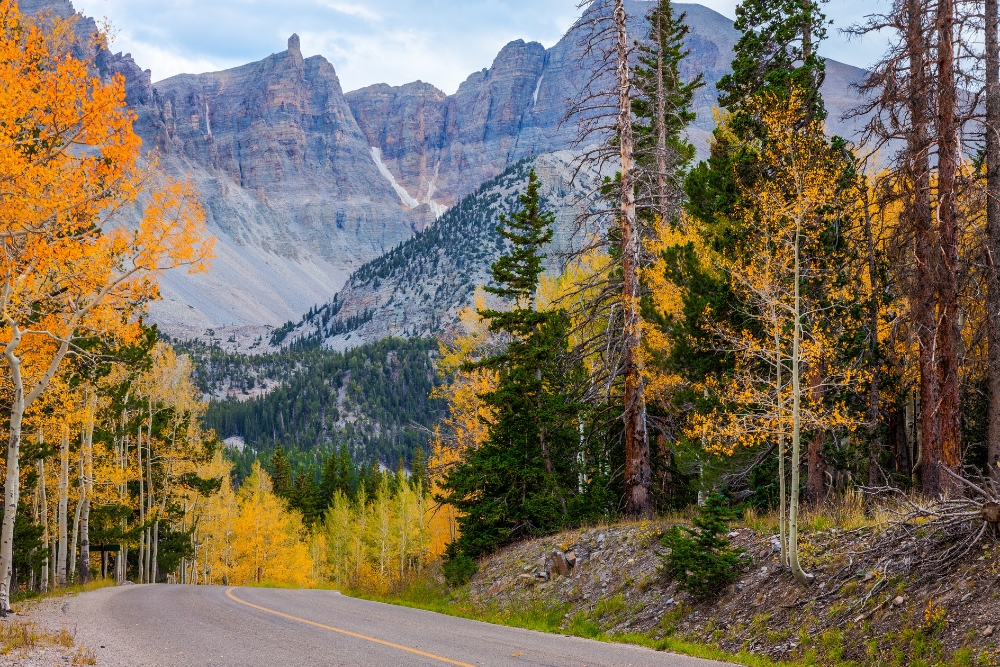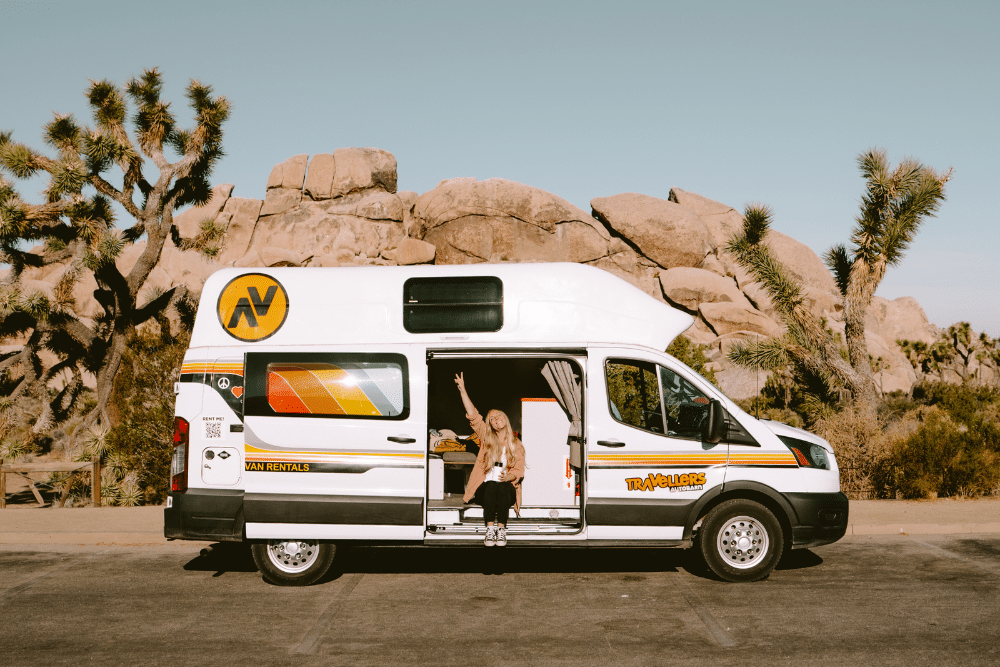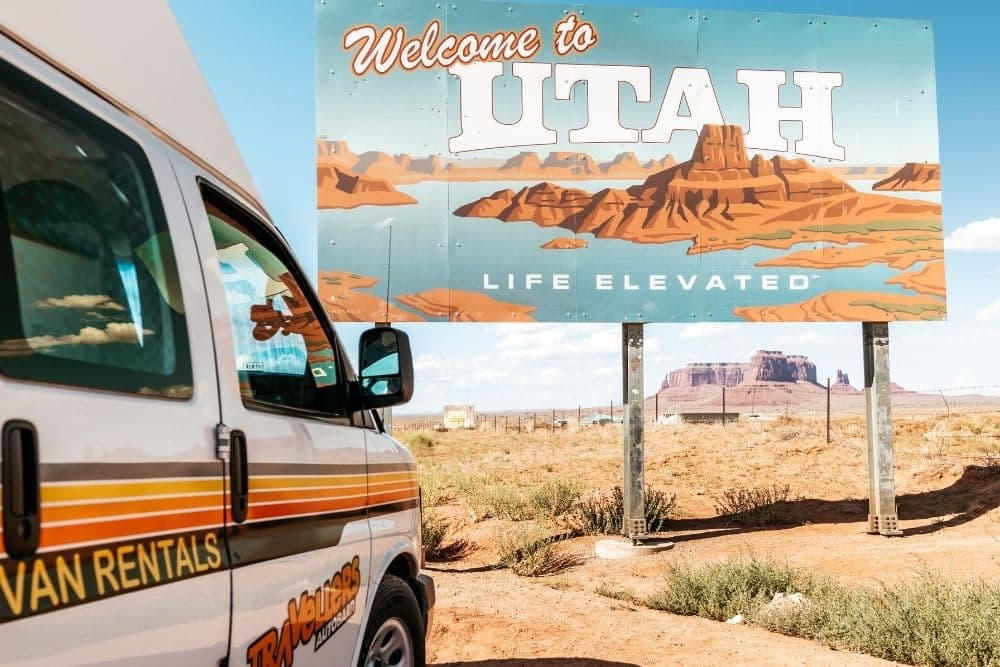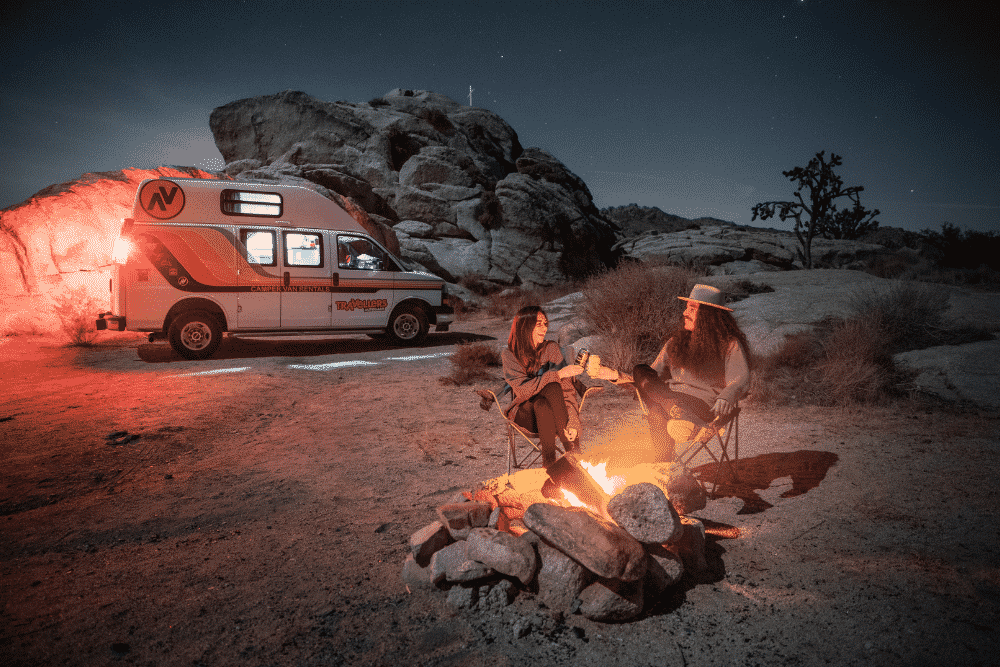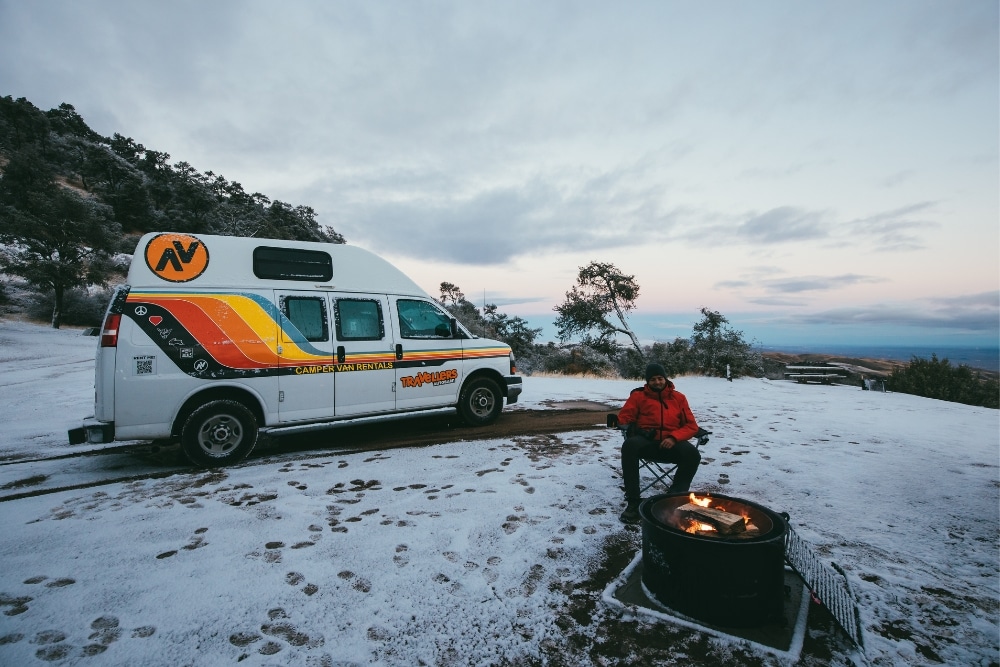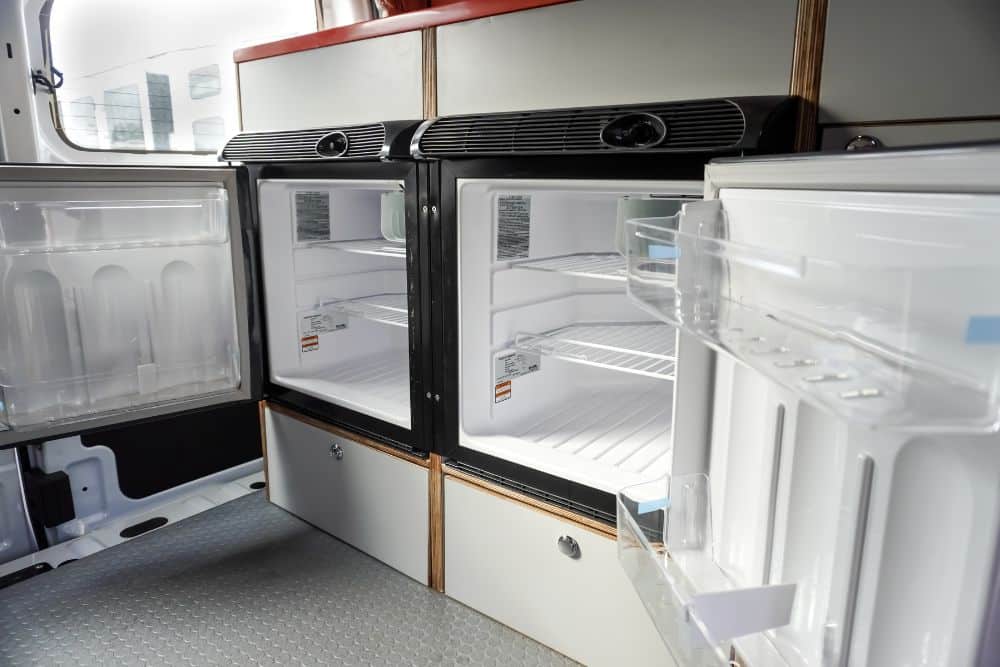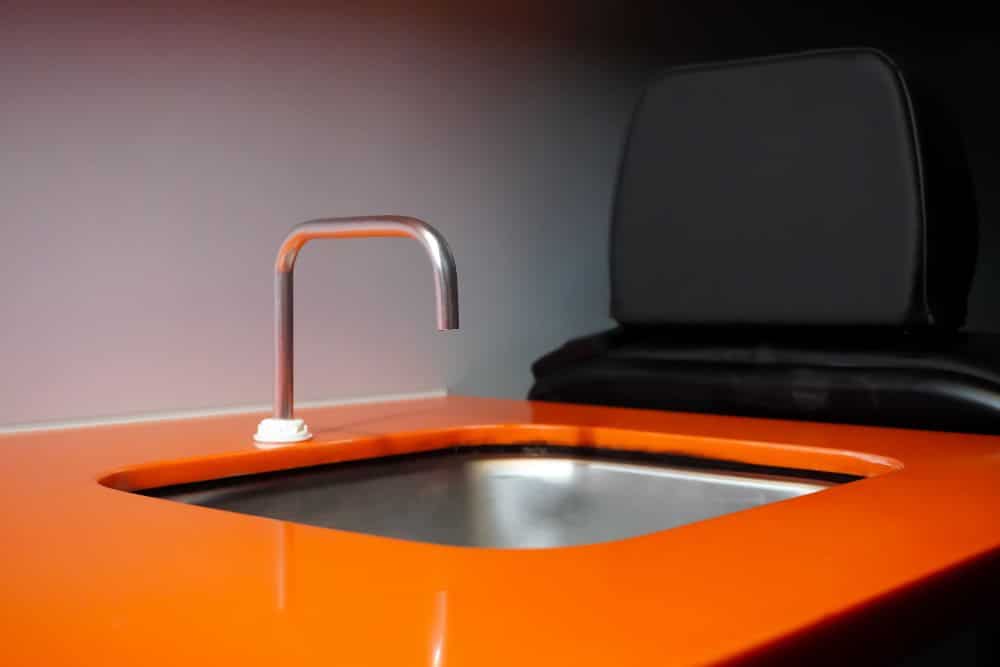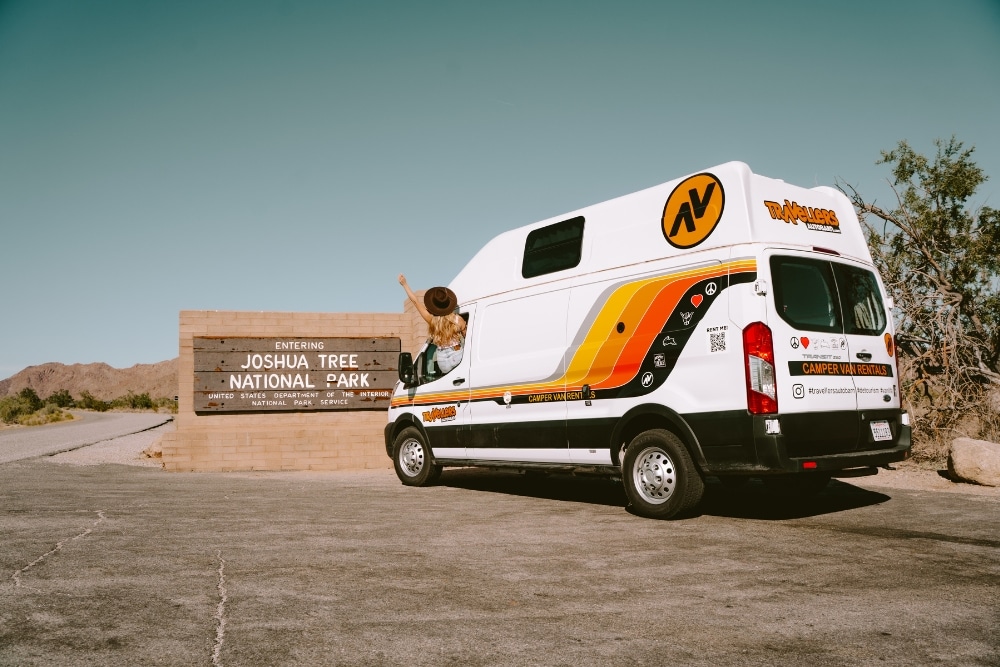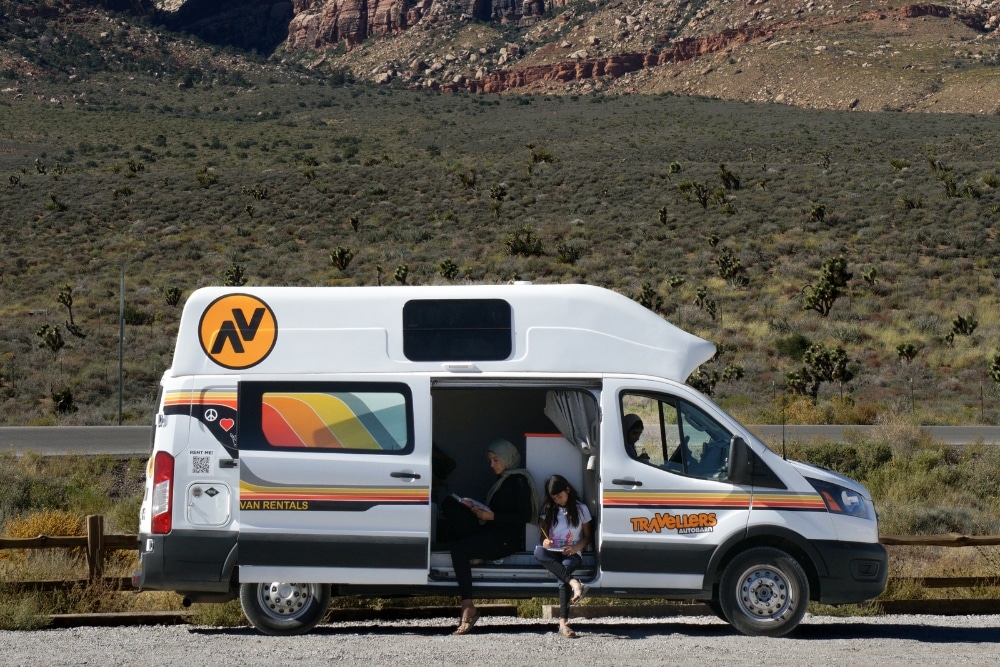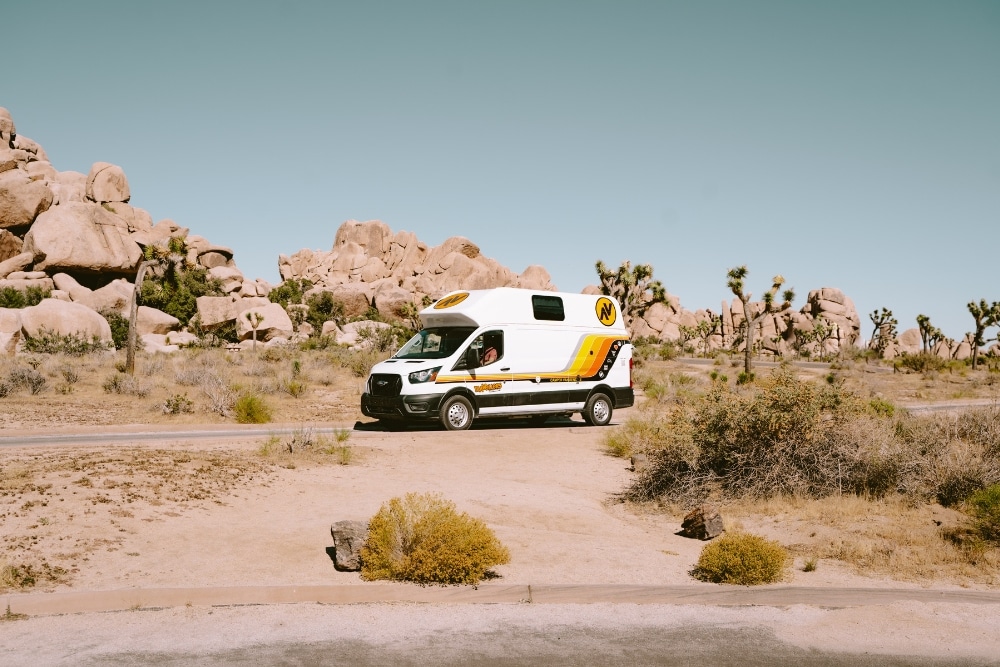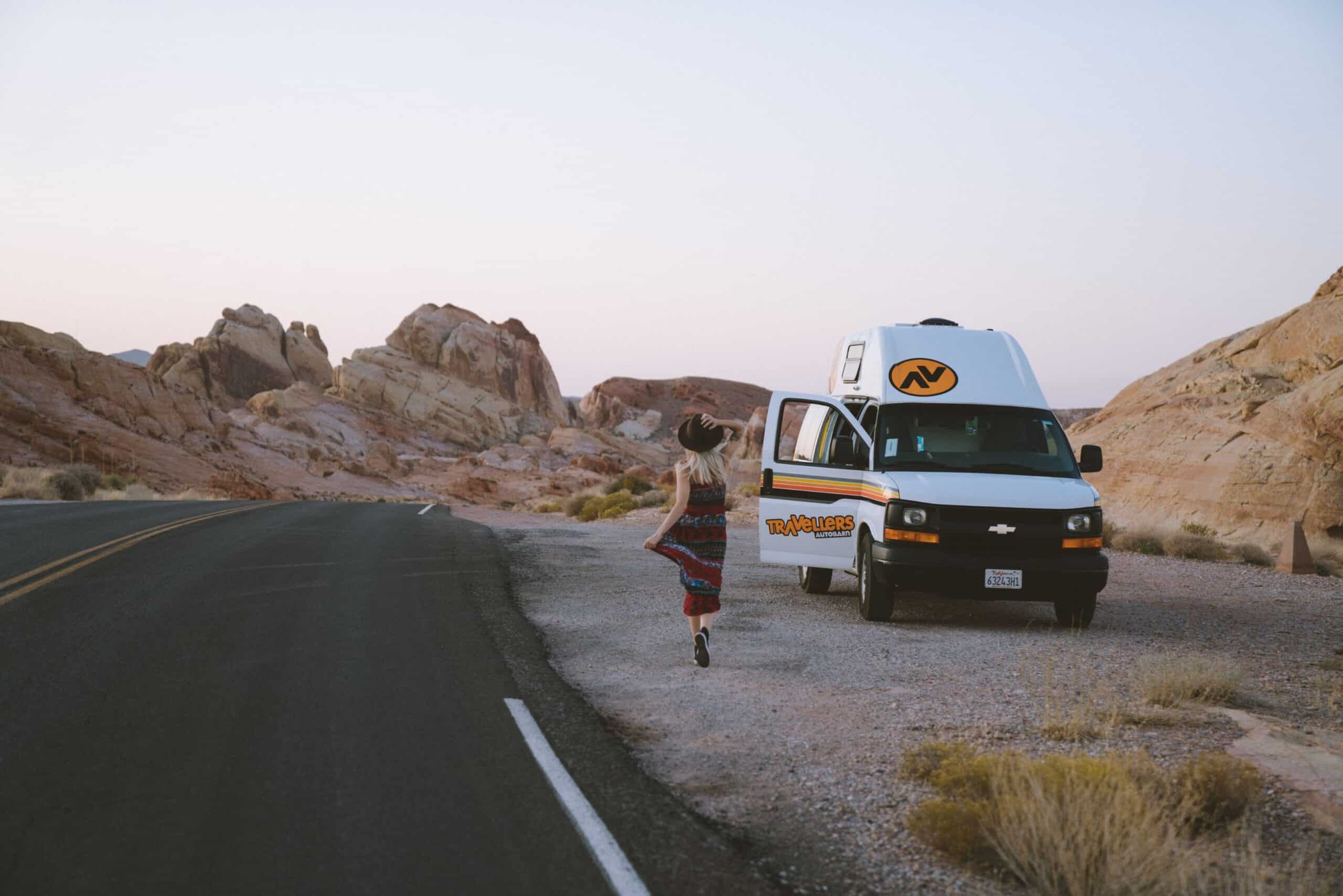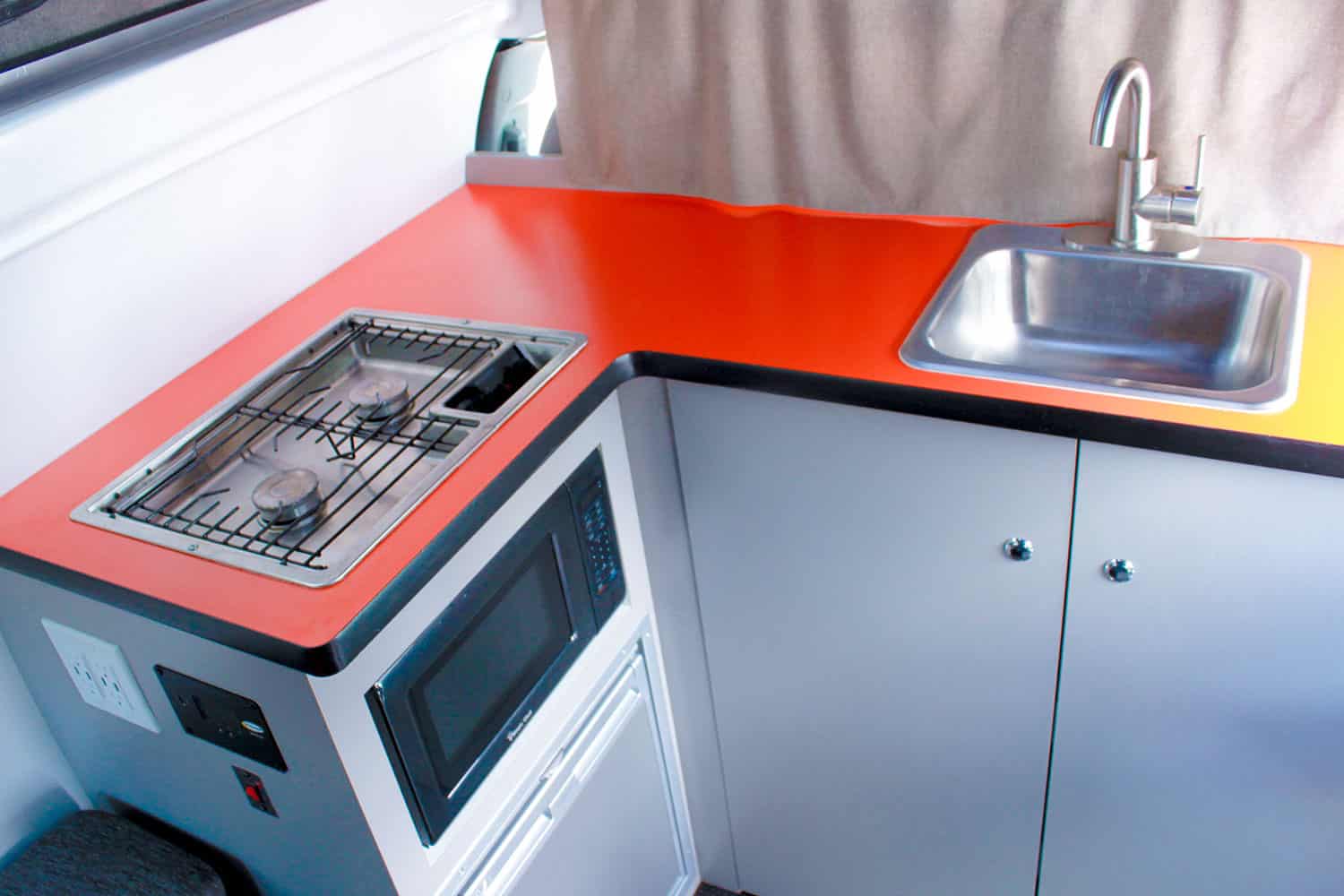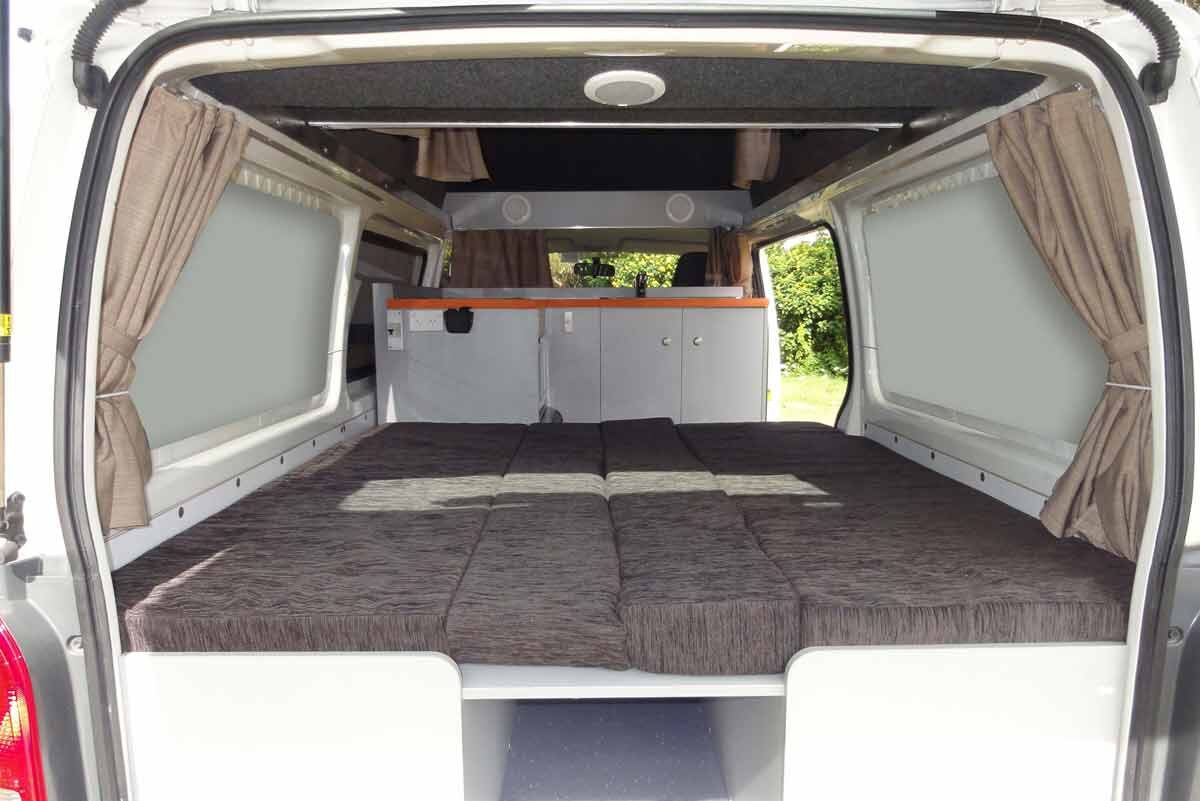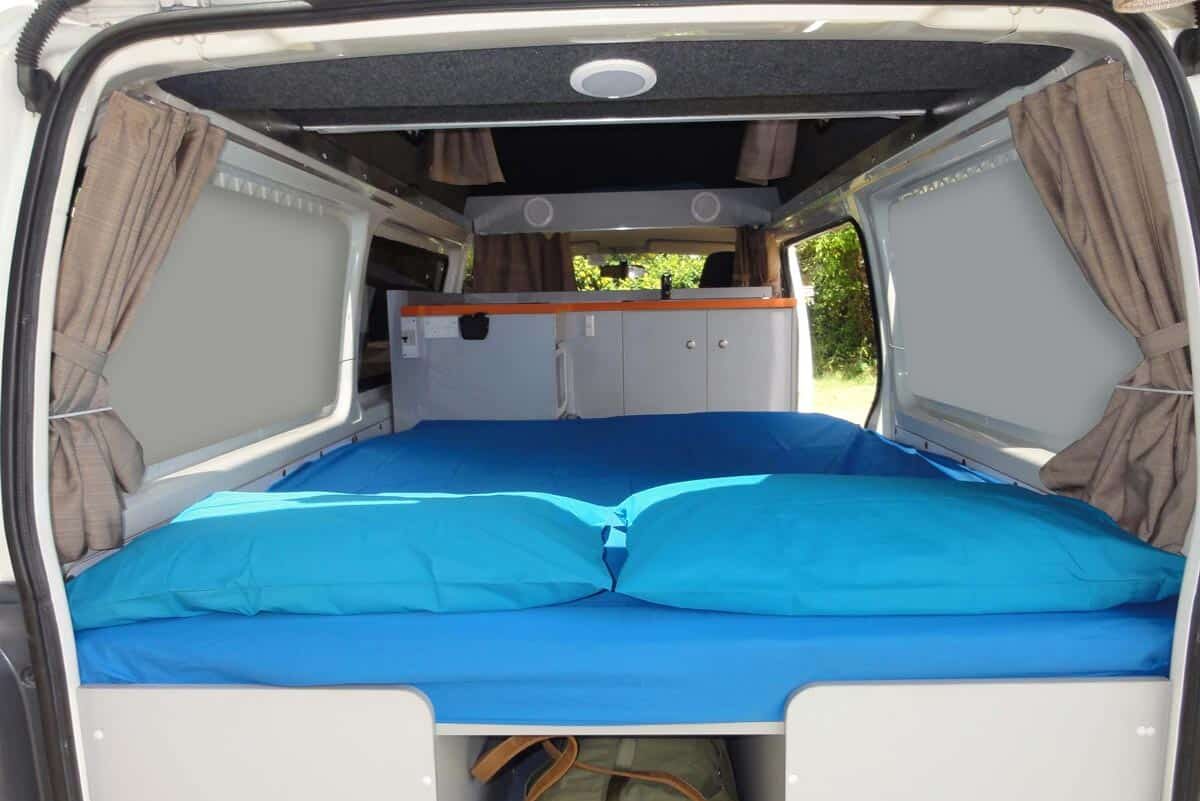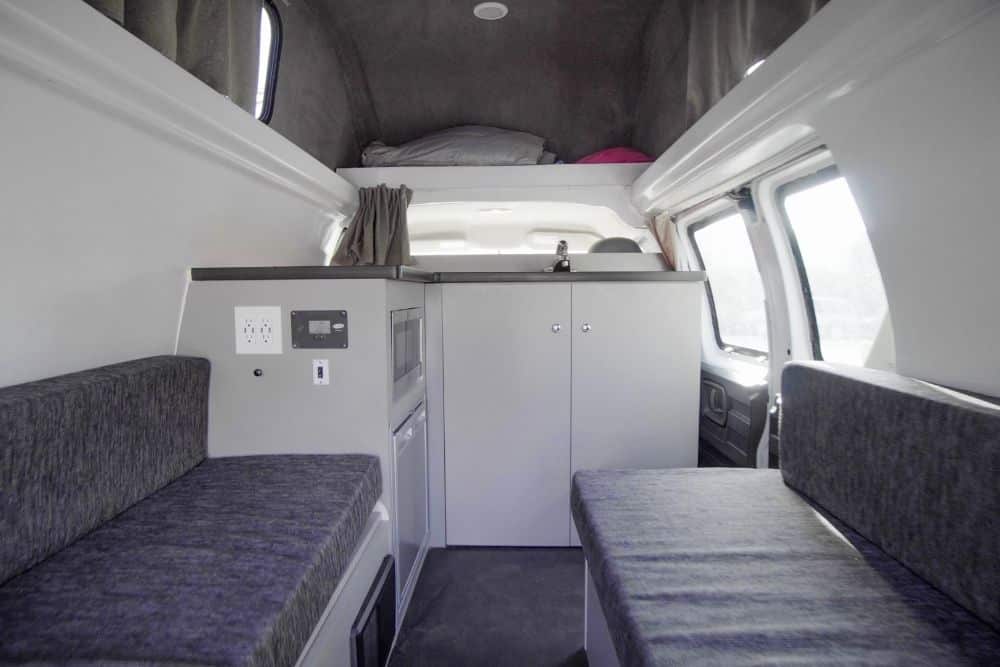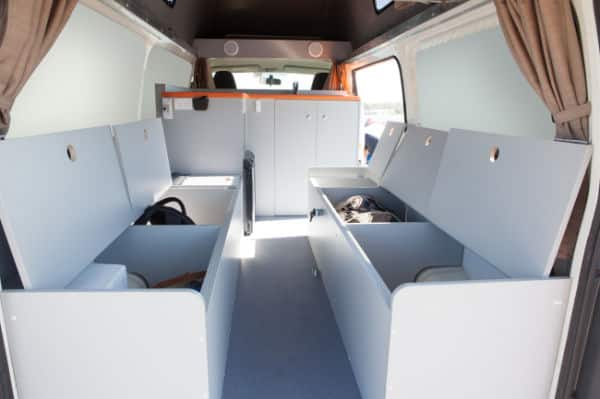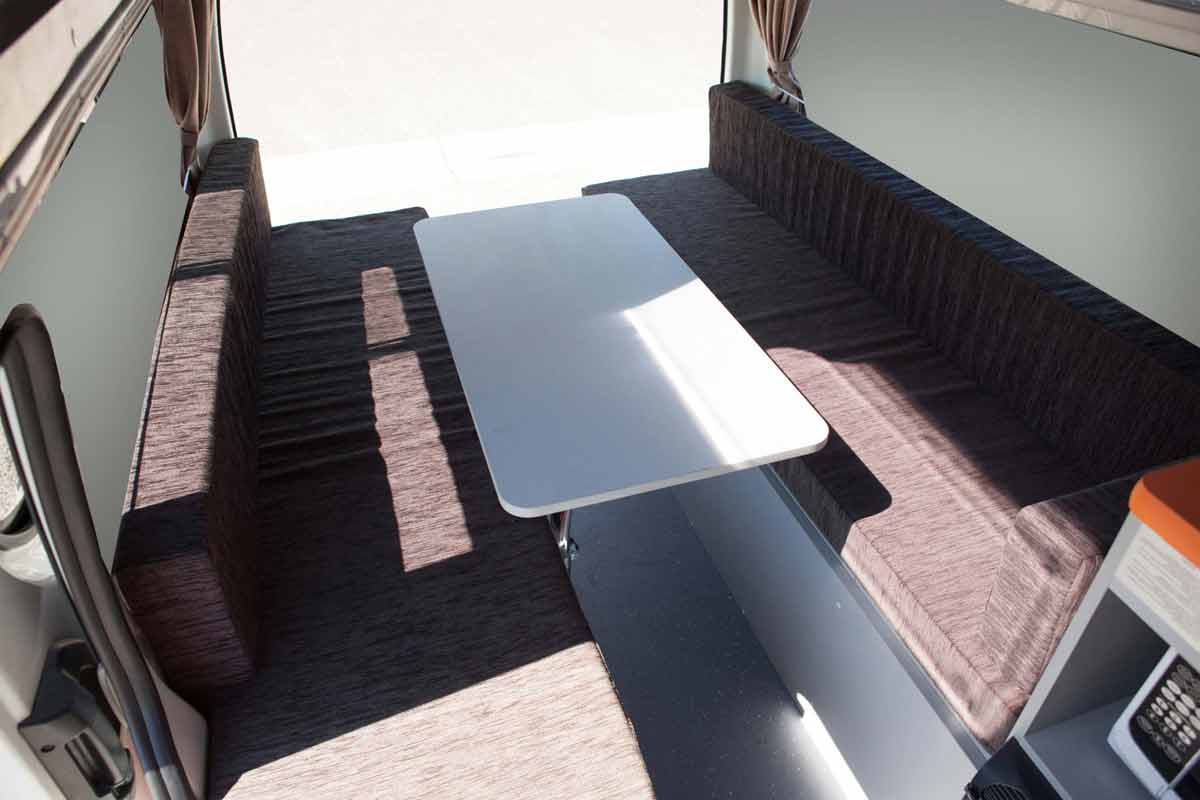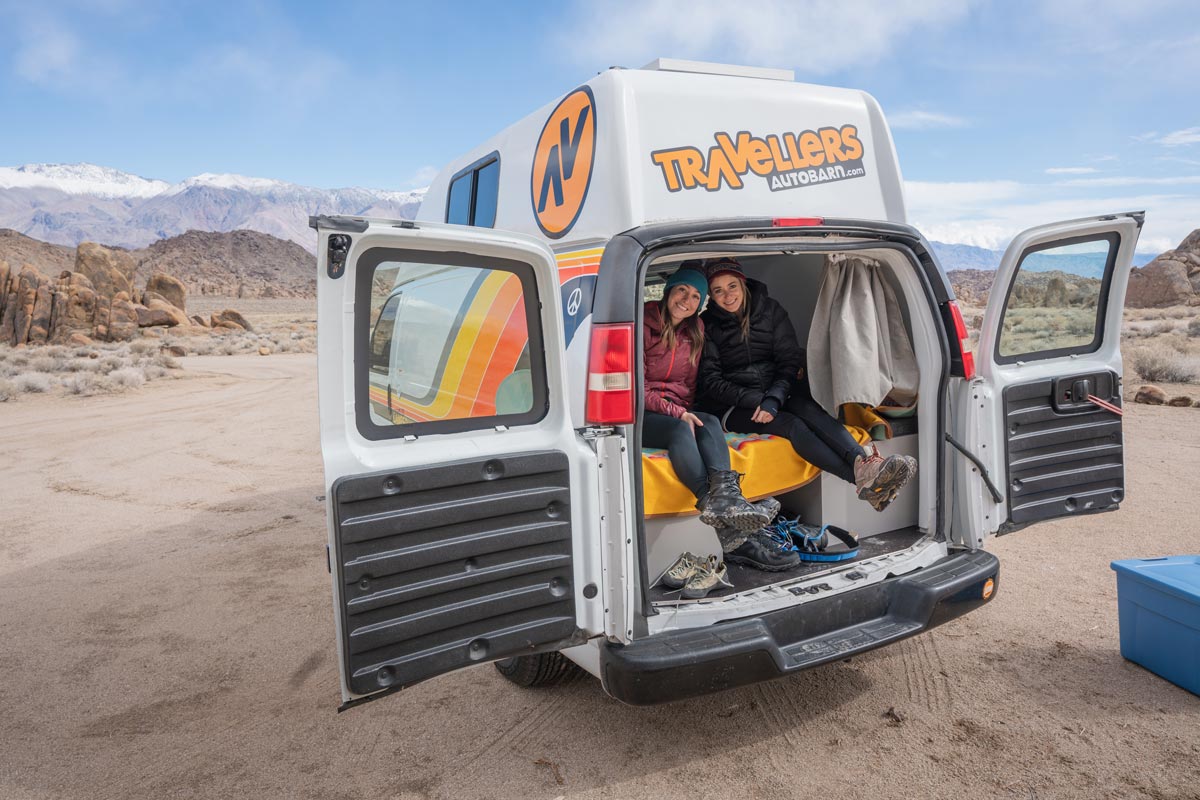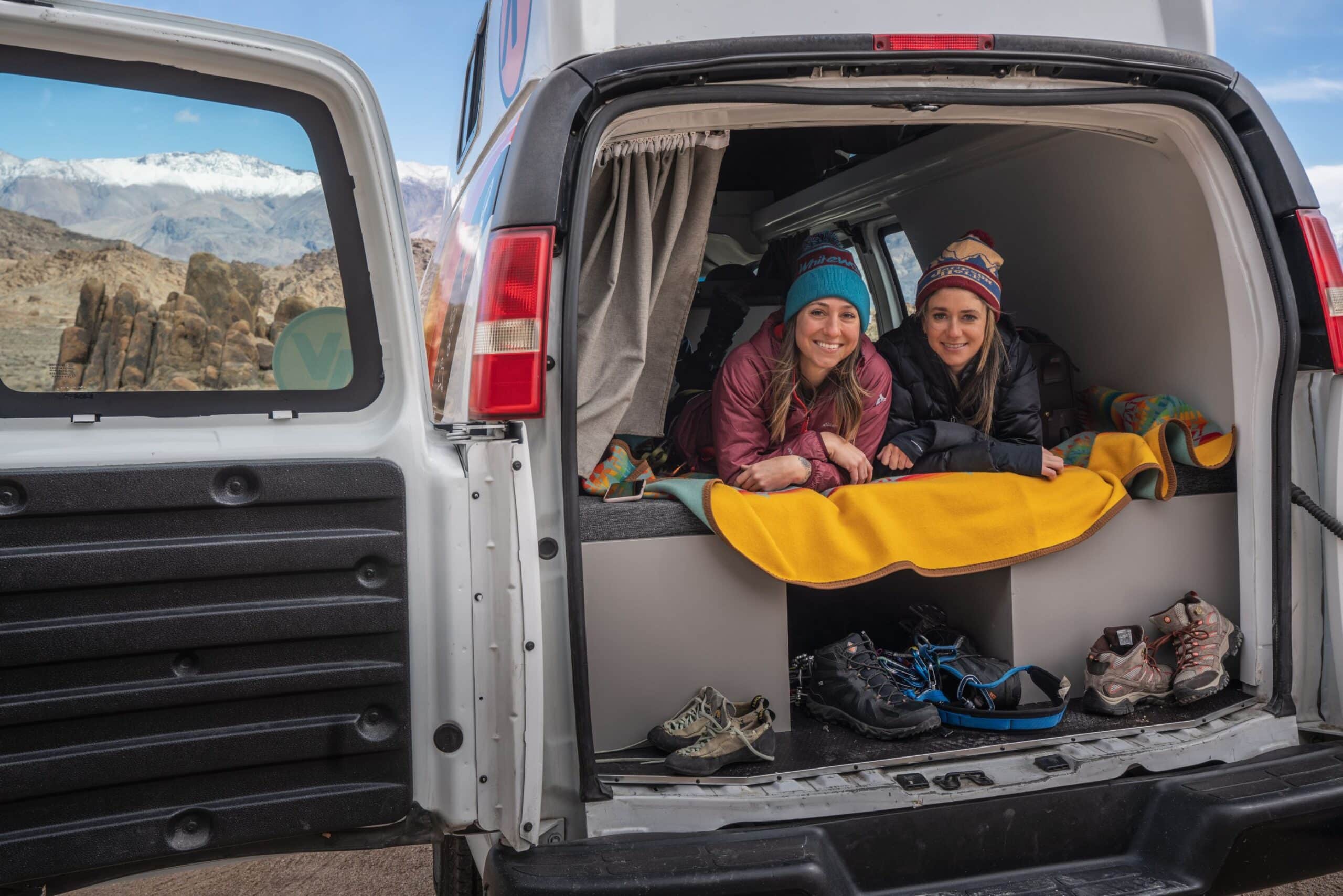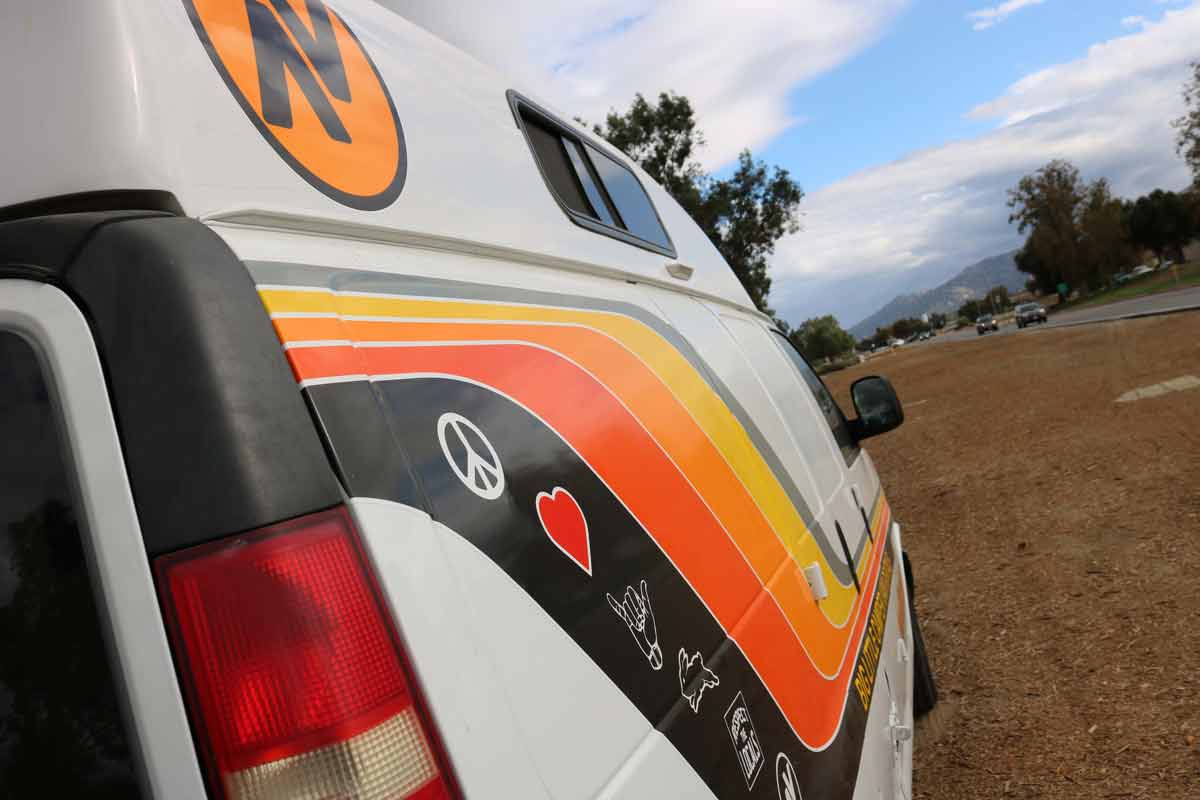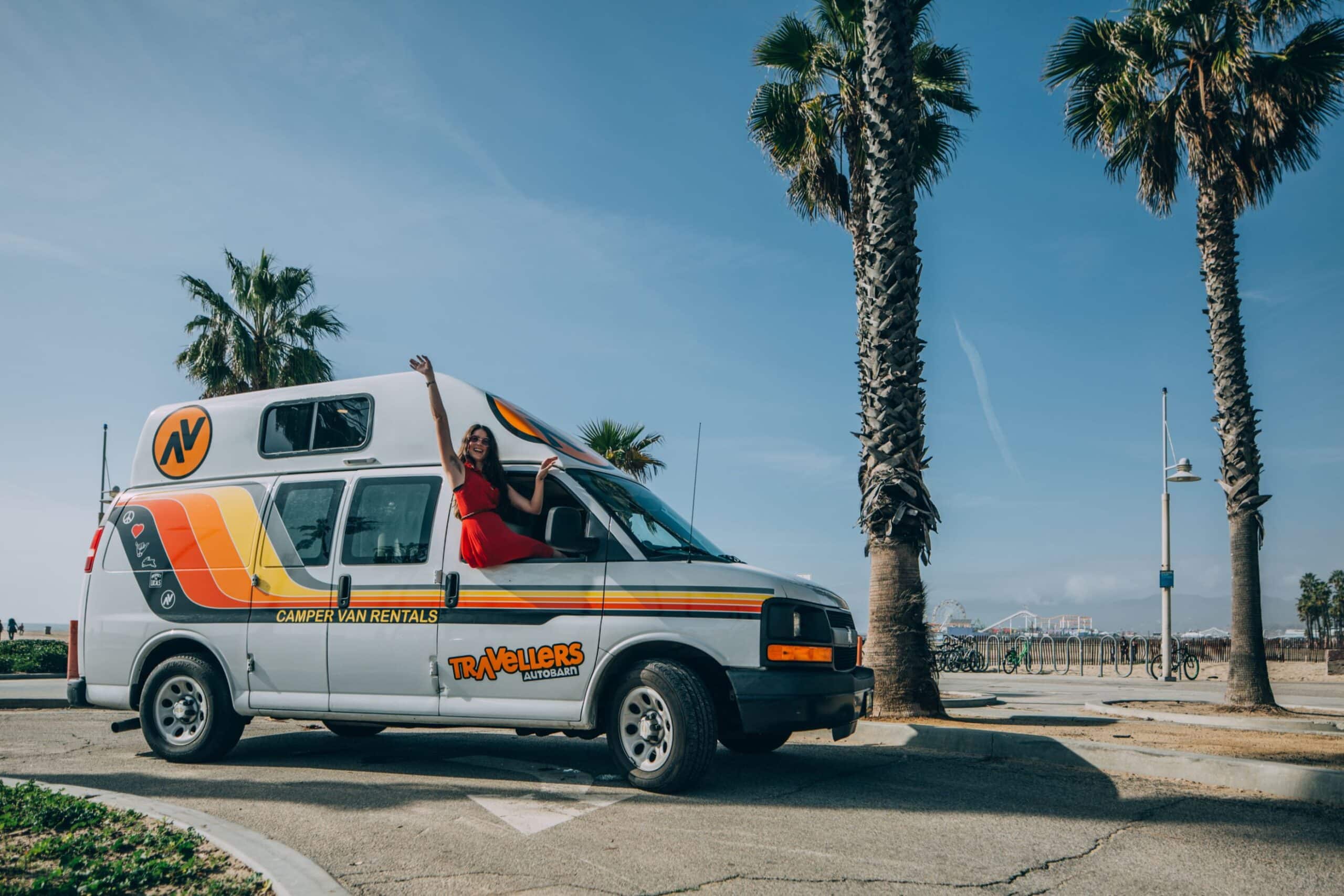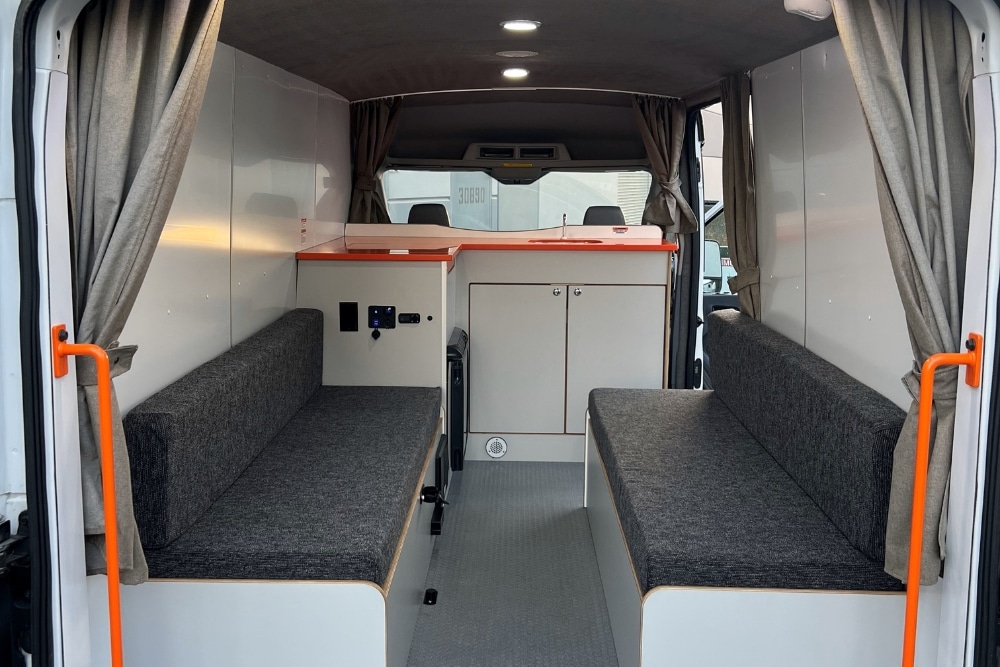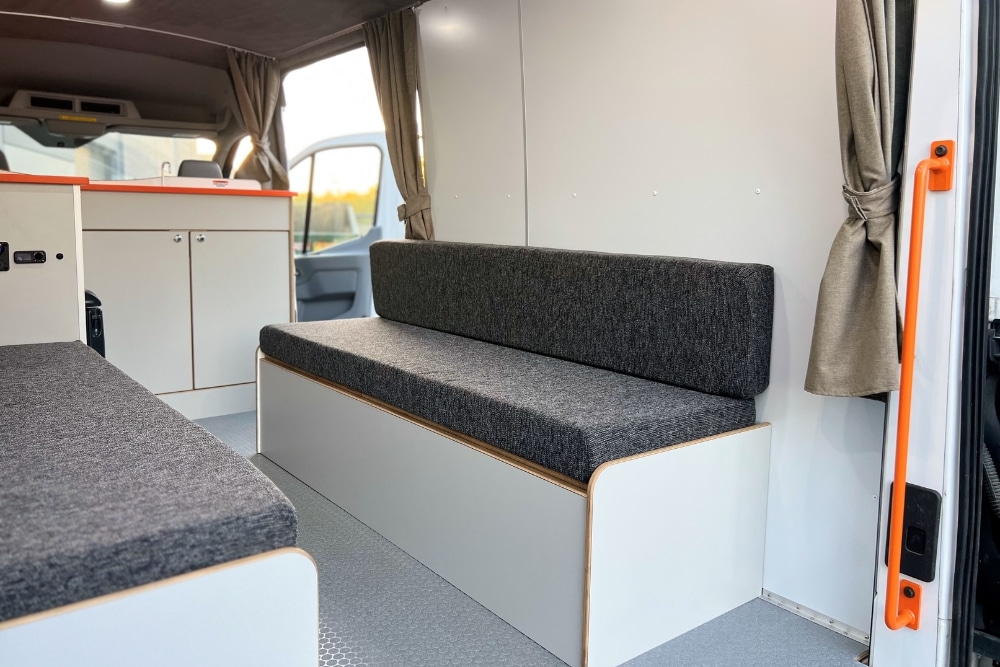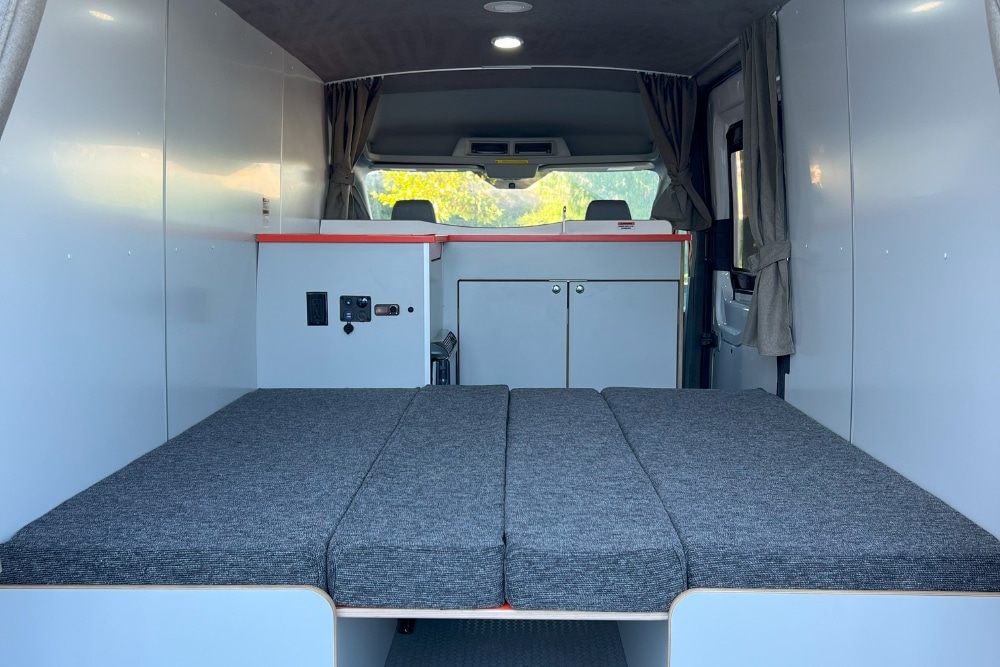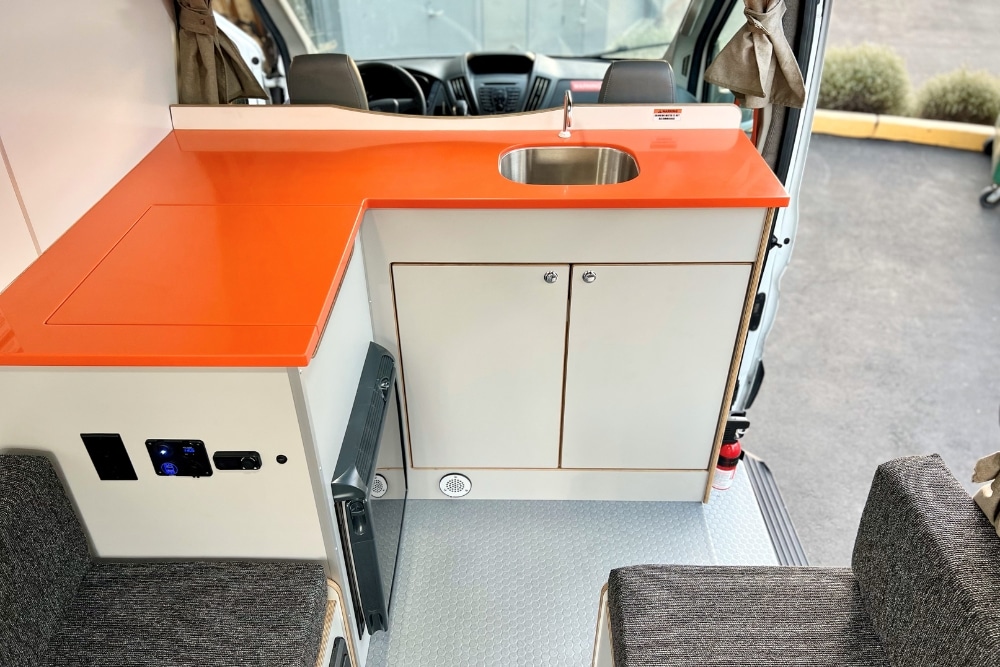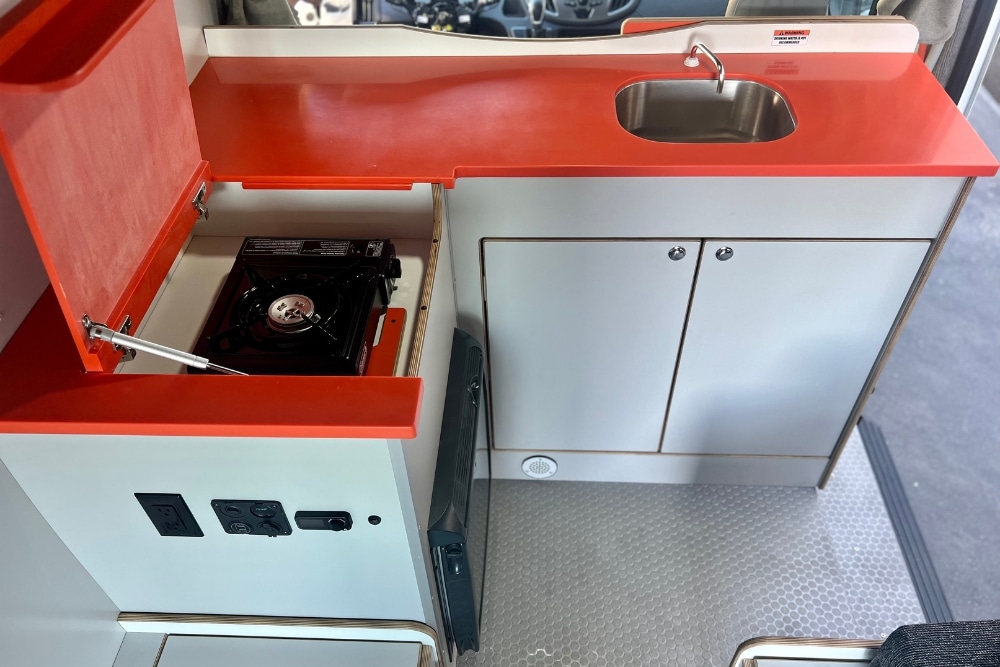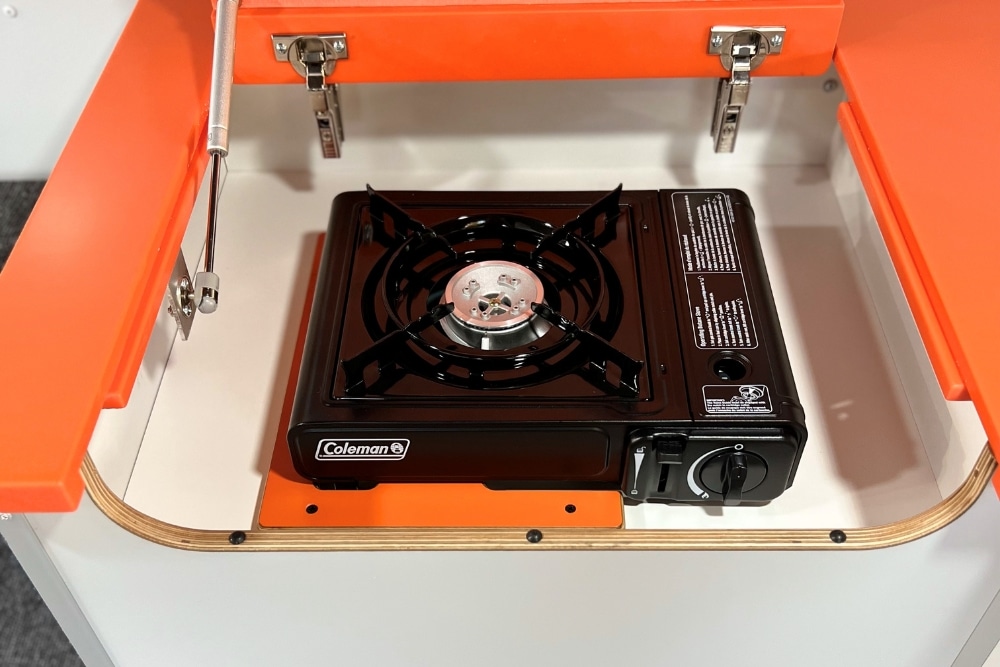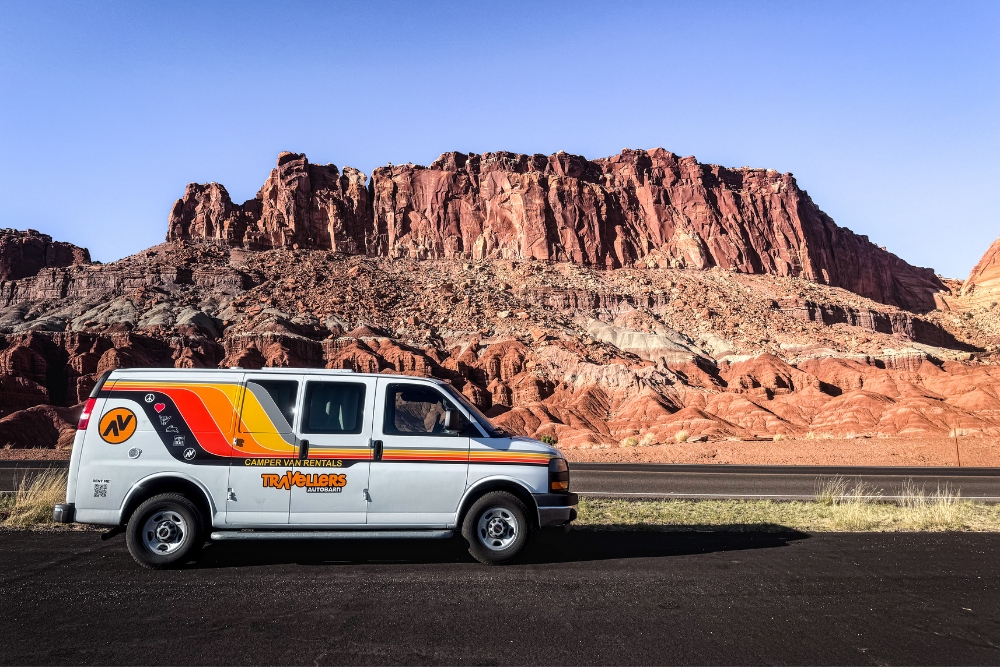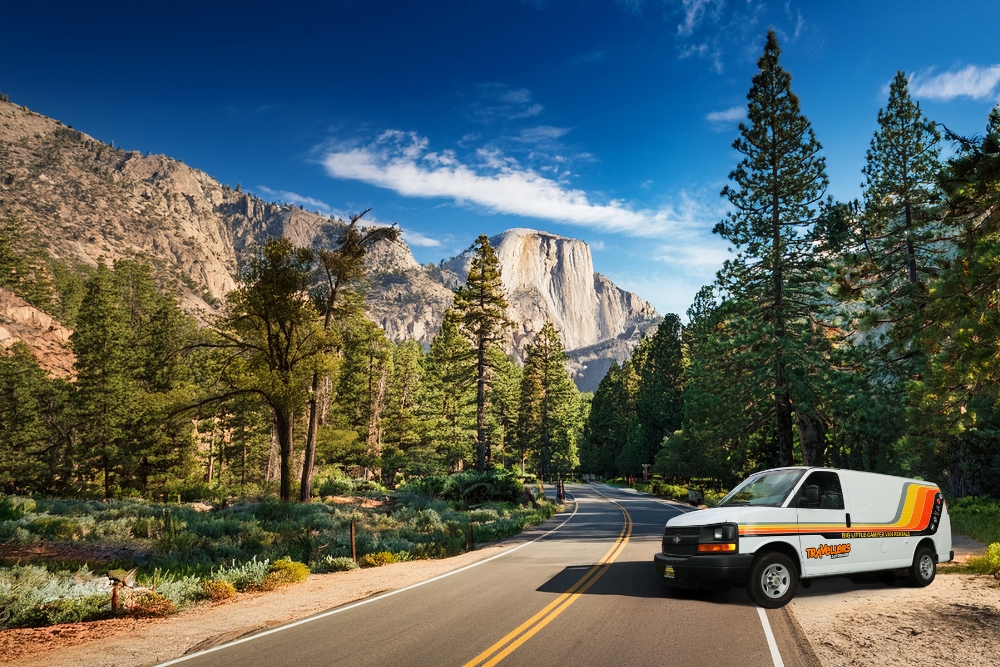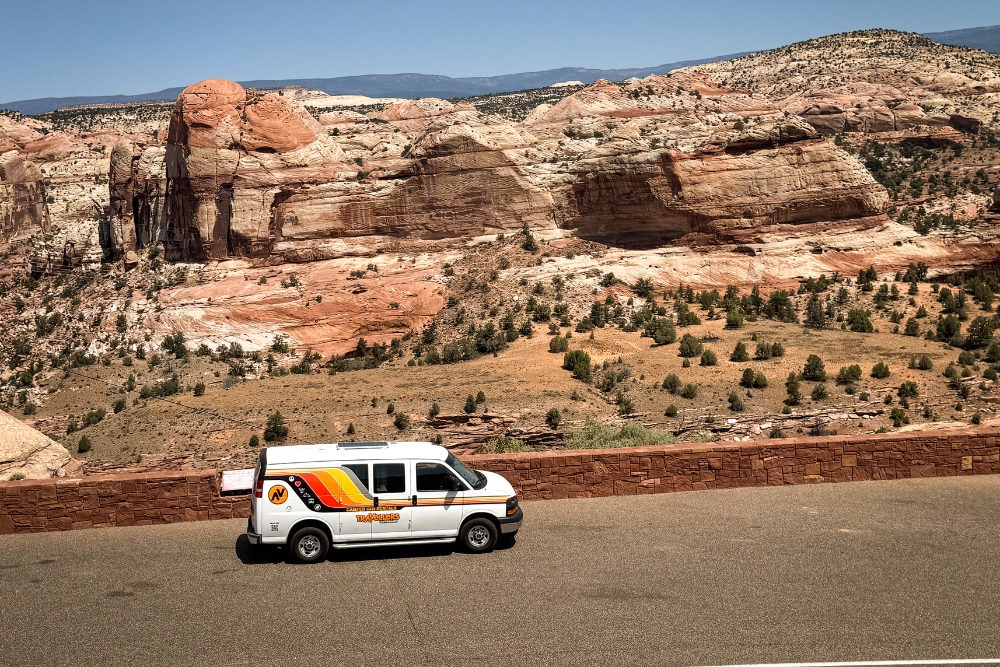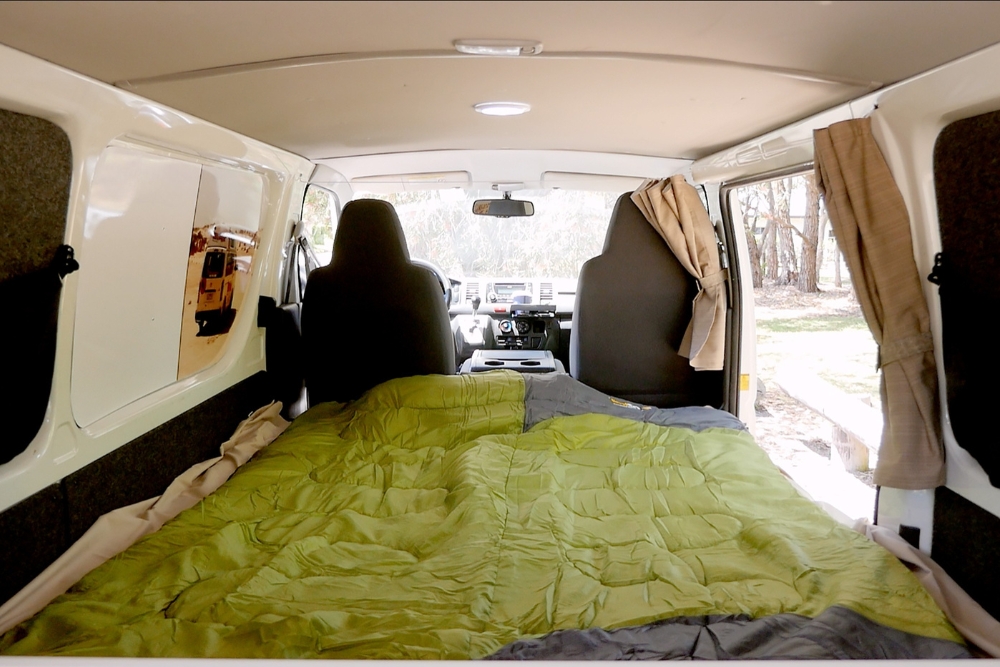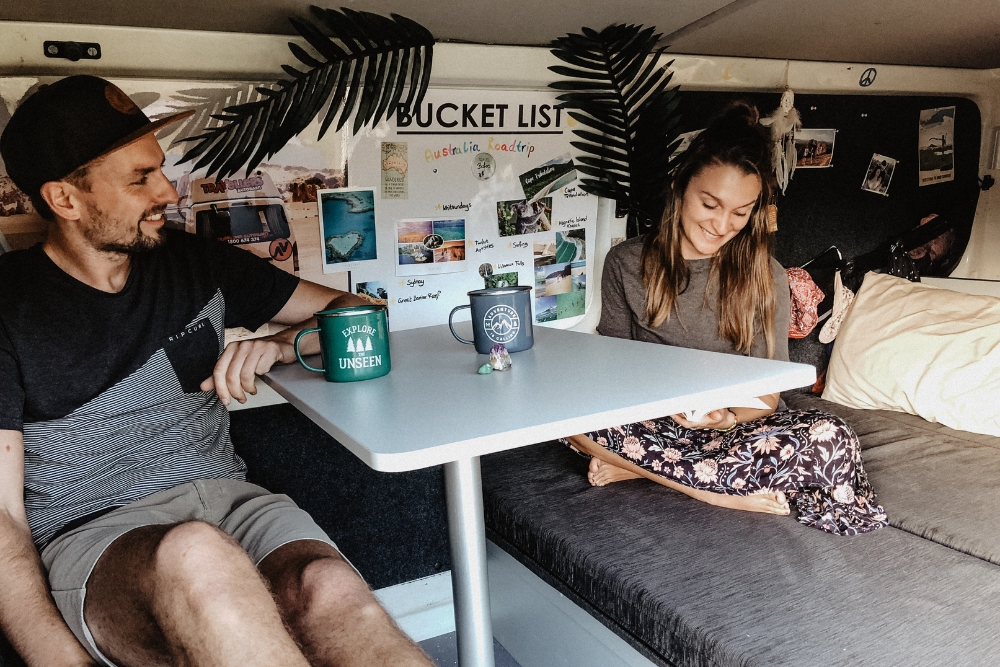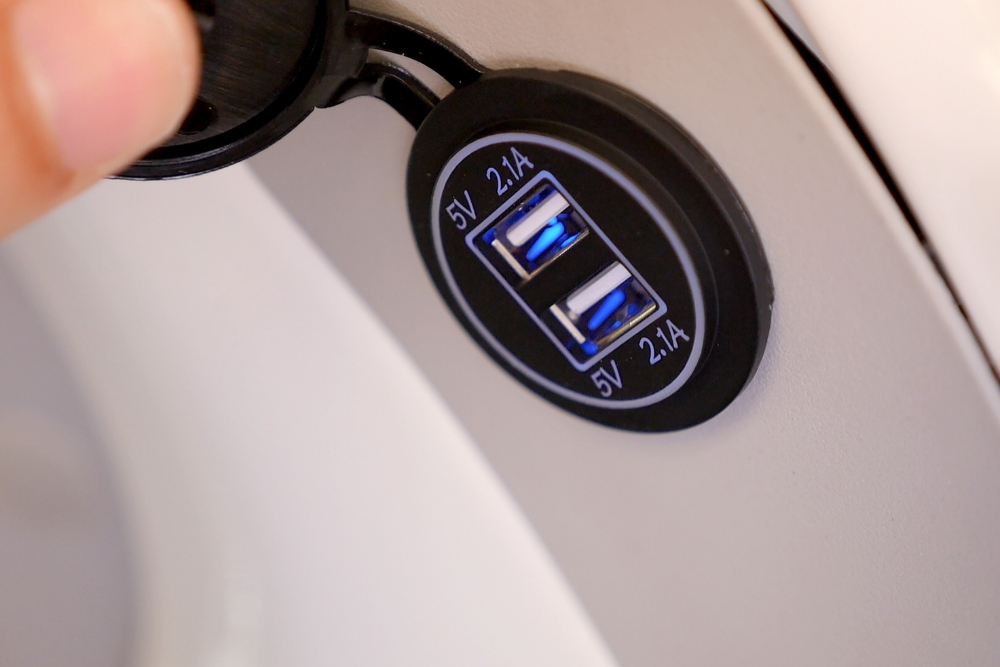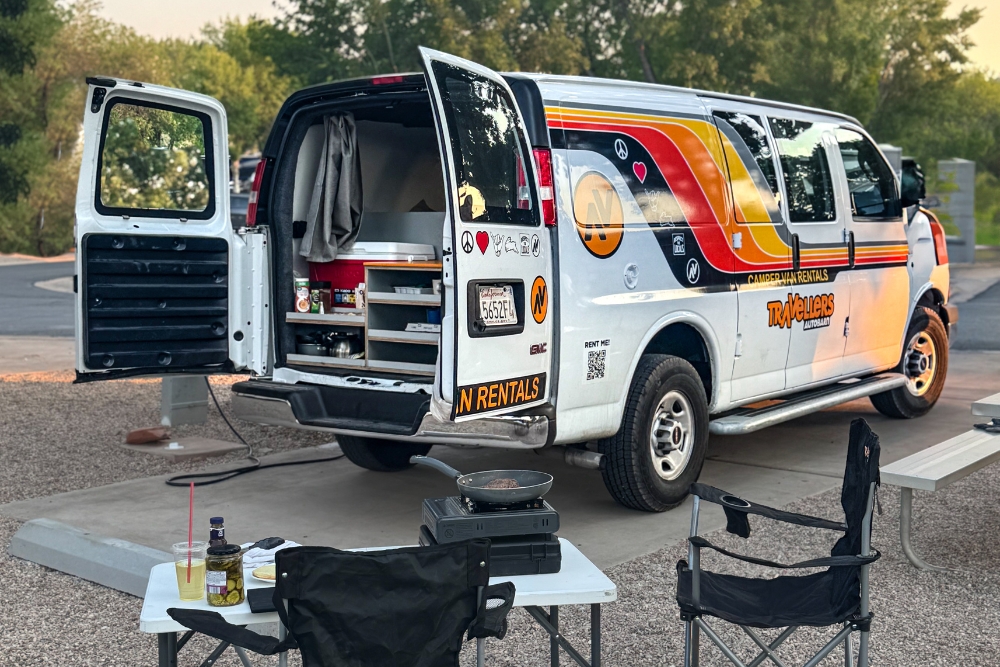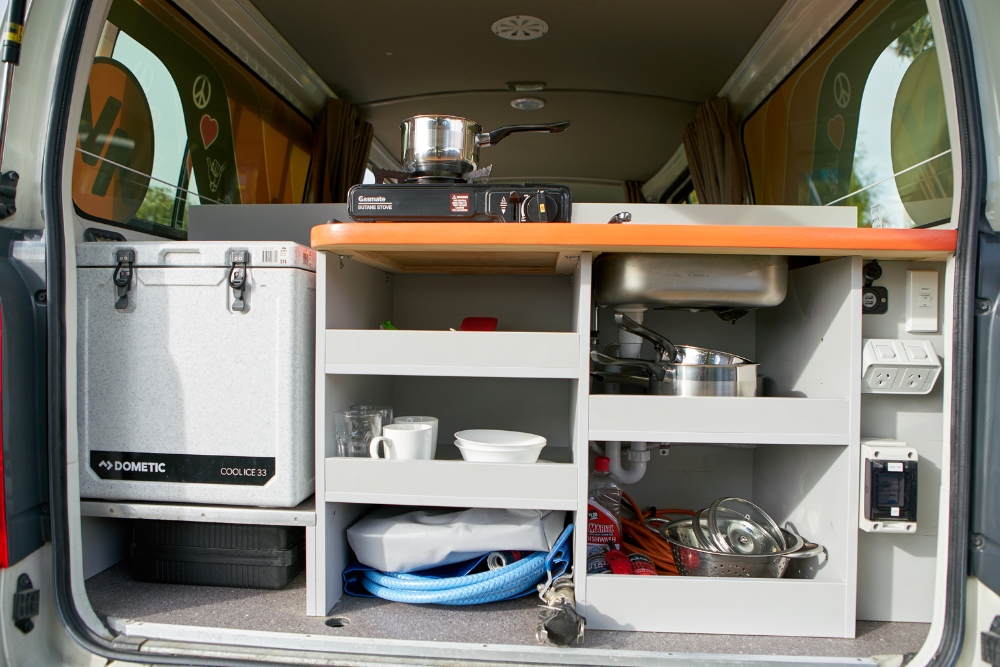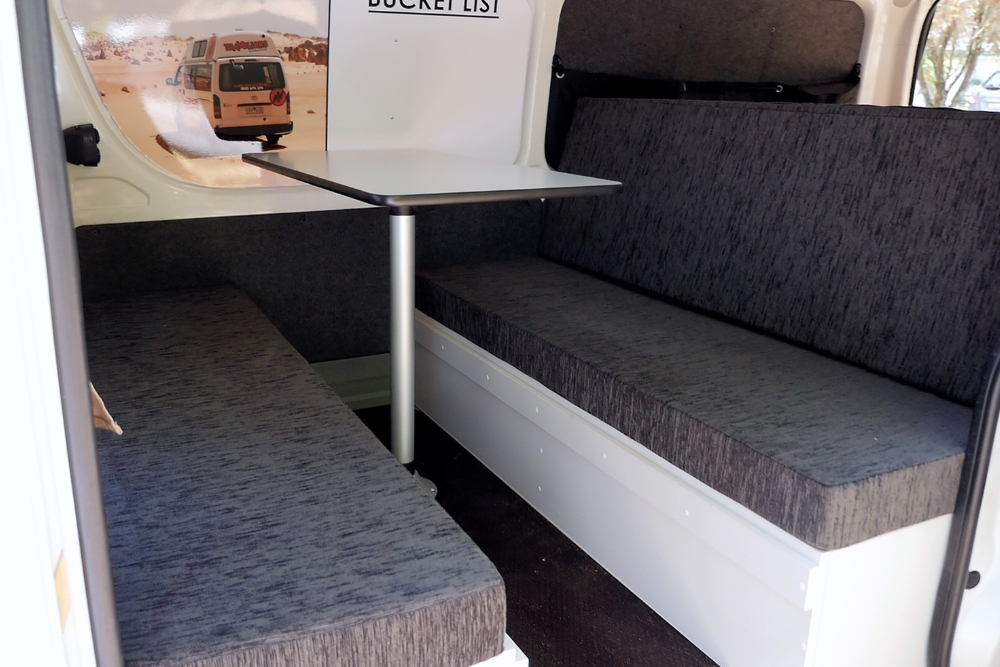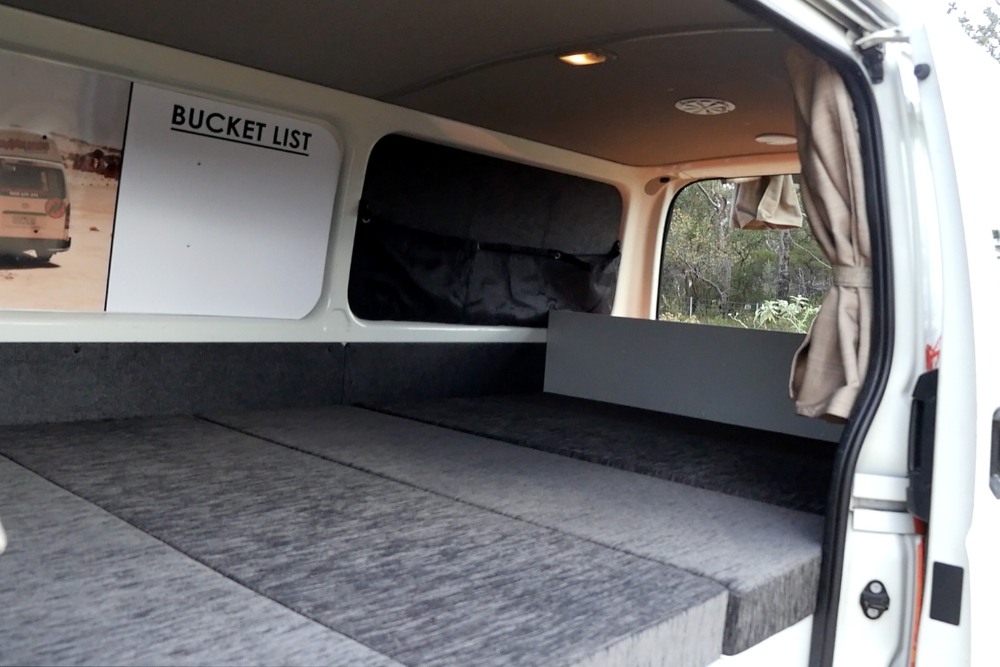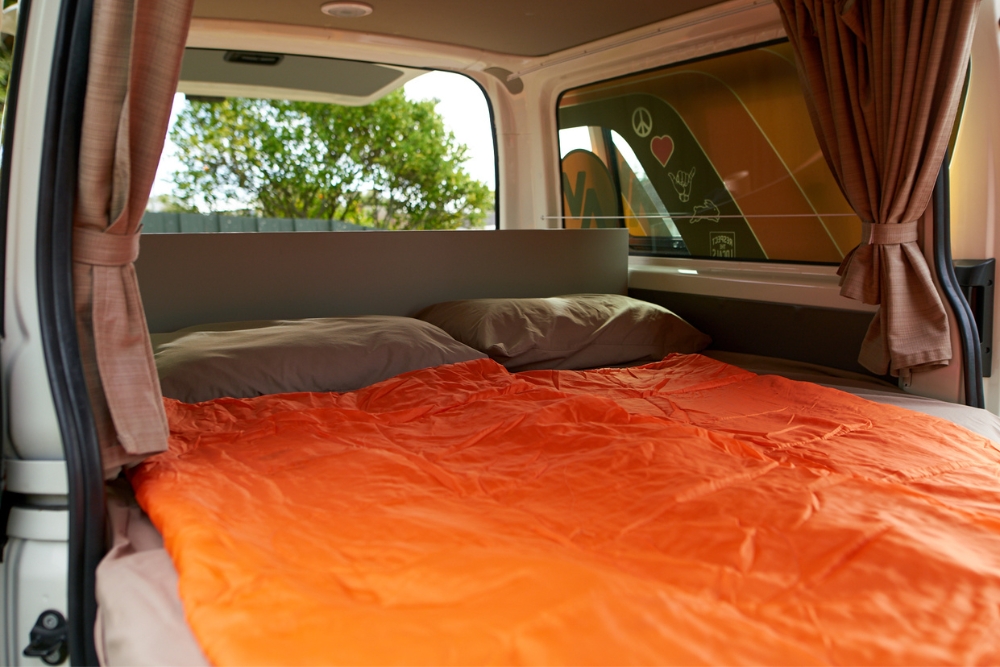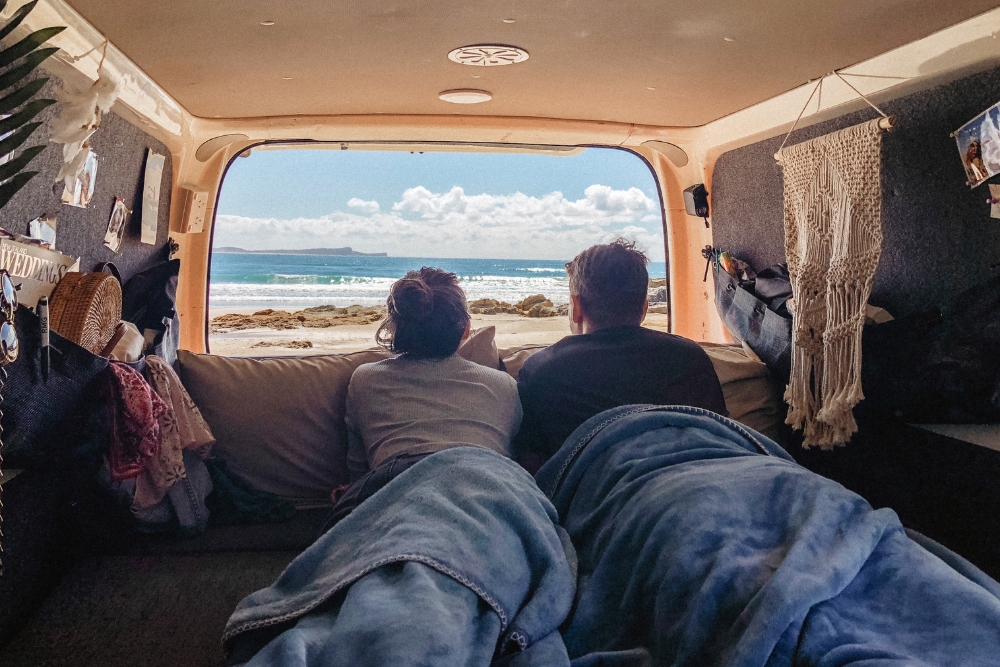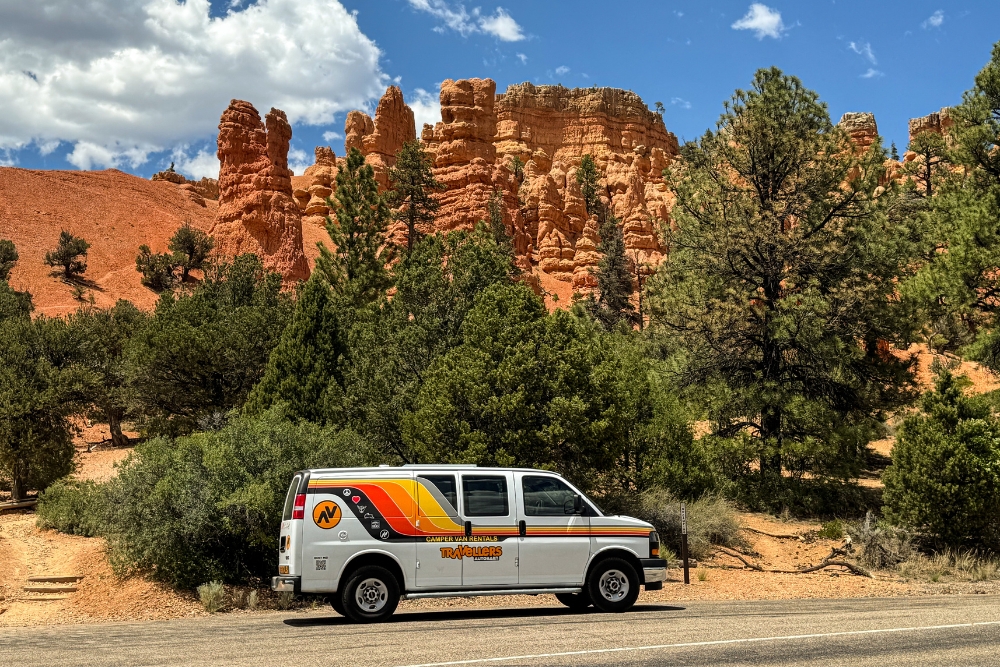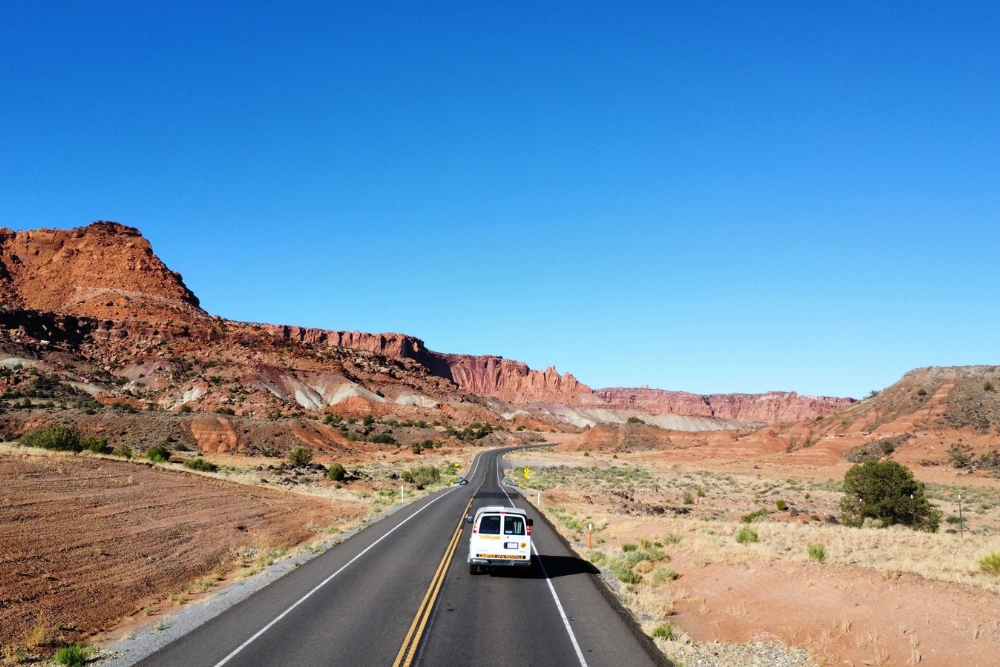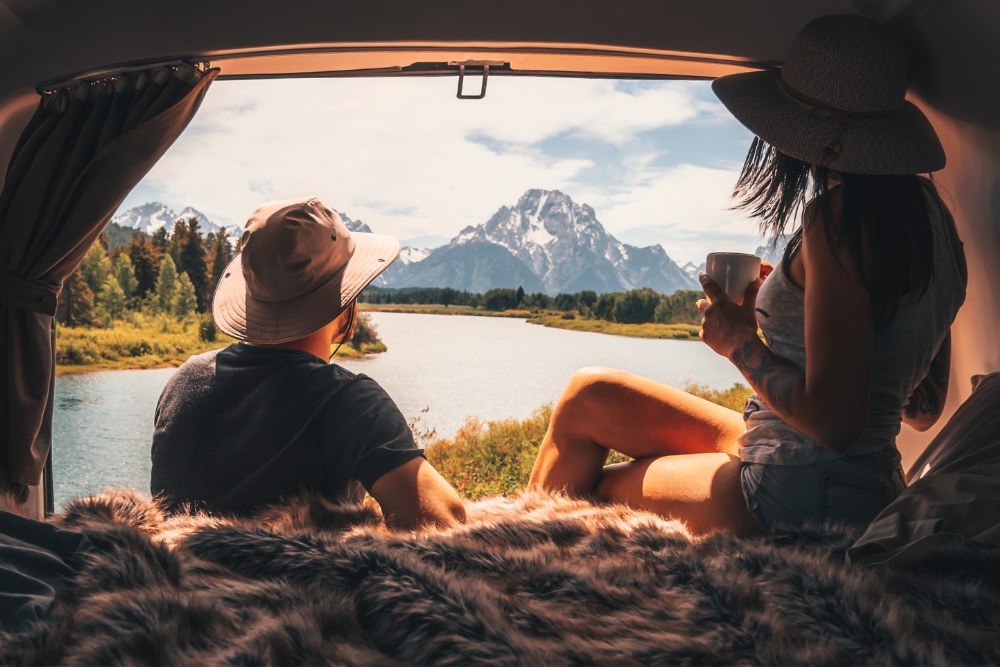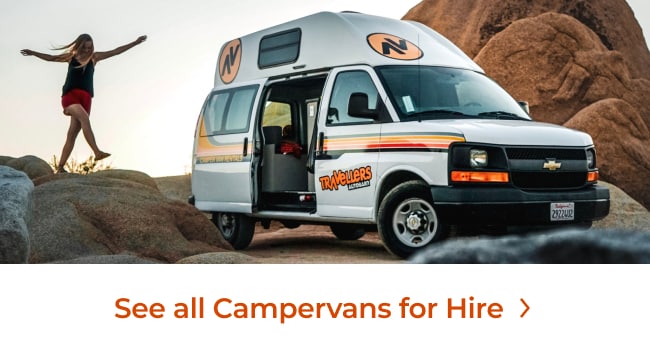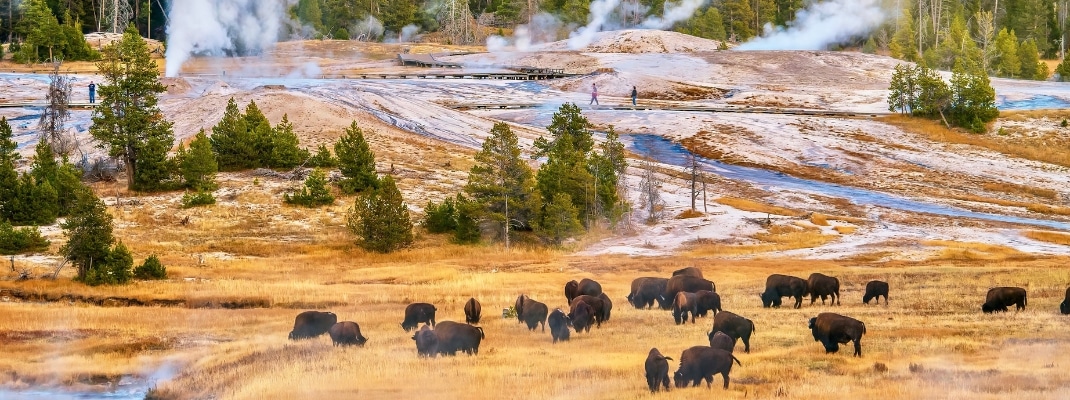
Yellowstone National Park is a legendary destination, with incredible geothermal features, breathtaking vistas, and an abundance of wildlife, all waiting to be explored. And, for those looking to immerse themselves in the heart of this natural wonderland, camping offers you the perfect opportunity to connect with the landscape. But which campgrounds in Yellowstone are the best?
Here, we’re going to take you through the essential details about Yellowstone’s top campgrounds, including information about amenities, seasonal considerations, and nearby activities, making it much easier to decide which Yellowstone campgrounds suit your needs and wants best. Whether you’re planning a family vacation or a solo trip, you’ll find everything you need to know to find the ideal base for your Yellowstone adventure.
Are you ready? Let’s go exploring!
Bridge Bay Campground
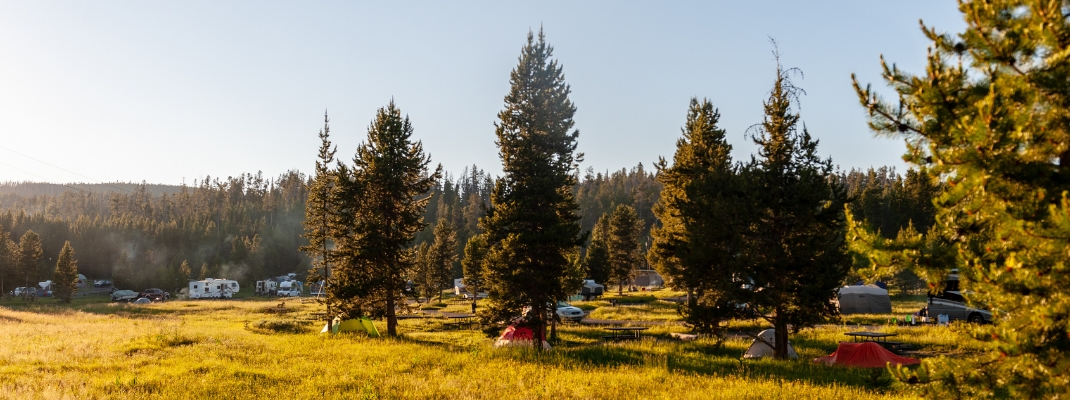
Perched on the western shores of Yellowstone Lake, Bridge Bay Campground is a favorite for campers who want to soak in the tranquility of the park’s largest body of water. This is the largest campground in Yellowstone National Park ,with over 400 sites to choose from, but it is worth noting that while RVs up to 40 feet can settle in comfortably, none of the sites have electrical, water, or sewer hookups.
Instead, the campground offers amenities like flush toilets and potable water, which means you’ll have a comfortable stay without straying too far from the rustic experience you’ve been craving. A dump station is also conveniently located nearby.
Open from May to September, Bridge Bay is placed in a prime location for summer travelers, but its high elevation of 7,800 feet does mean that, even in summer, temperatures can drop considerably at night, so make sure you pack accordingly. It’s also a very good idea to book ahead, as this popular site fills up pretty quickly.
Bridge Bay’s close proximity to Yellowstone Lake makes it a great spot to camp at if you’re looking to enjoy aquatic activities, including fishing or boating along the river. Or, if you prefer to keep your feet on land, the Storm Point Trail (a 2.3-mile loop across gentle terrain) is just a short drive away.
Canyon Campground
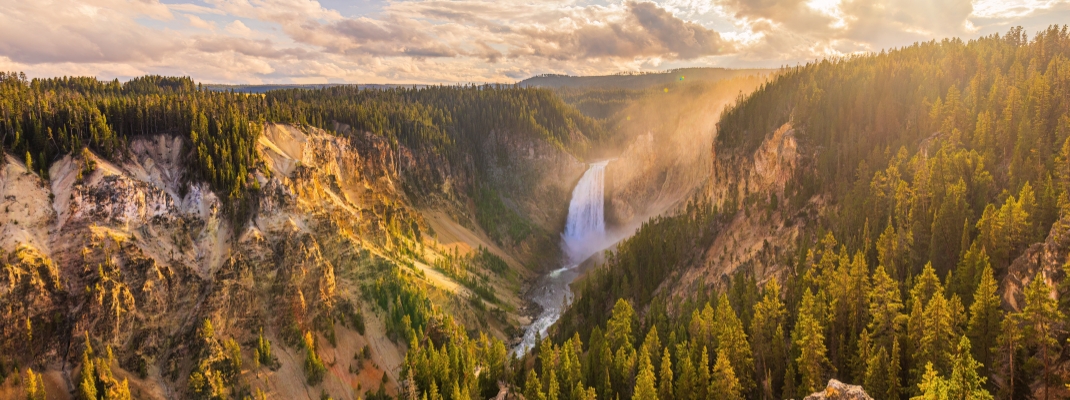
Set in the heart of Yellowstone National Park, Canyon Campground is just a stone’s throw from the magnificent Grand Canyon of Yellowstone and is surrounded by a towering lodgepole pine forest that helps add to both the sense of magic and seclusion, despite being a relatively central location within the park.
There are over 270 campgrounds at this site, with many suitable for RVs up to 40 feet long. The sites are also spread out in loops, which creates a spacious atmosphere and helps things feel more intimate, and while there are no hookups for RVs, you are provided with flush toilets, potable water, and a dump station. The nearby Canyon Village also gives you easy access to a general store, laundry facilities, and a visitor center where you can learn more about Yellowstone’s natural wonders!
Canyon Campground is open from late May to mid-September, and camping regulations here follow Yellowstone’s standard guidelines. This means that all food must be stored in a way that doesn’t attract bears, and campers should remain vigilant at all times, especially during early mornings and evenings when wildlife is most active.
The central location of this campground makes it an excellent choice for anyone who wants to explore both the geothermal features of Yellowstone National Park and its more rugged, mountainous terrain. Hiking enthusiasts will find plenty of trails to explore in the area, too, from the popular Brink of the Lower Falls Trail to more challenging routes like the Seven Mile Hole Trail, which descends into the canyon itself.
Grant Village Campground
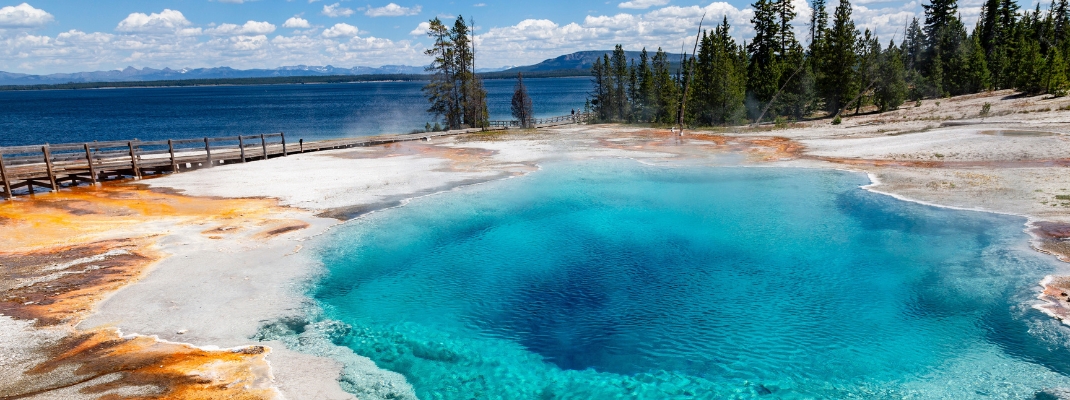
Grant Village Campground sits on the southwestern edge of Yellowstone Lake and is surrounded by dense forest that makes for a quieter, more remote atmosphere than some of the park’s other campgrounds. It’s also ideal for campers who want to explore the southern regions of Yellowstone National Park, including the West Thumb Geyser Basin and the park’s more secluded natural areas.
This is also one of the largest campgrounds in Yellowstone, with over 400 sites to choose from, though it should be noted that there are no electrical, water, or sewer hookups. You will, however, find basic amenities that include flush toilets, potable water, and a dump station for RVs. It’s also close to a small community area with a visitor center, gas station, restaurant, and general store, which is ideal for campers who enjoy a bit more convenience but still want the camping experience.
Grant Village Campground is open from late June to mid-September, and it is one of the park’s most popular summer campgrounds. The elevation here is also slightly lower than Bridge Bay Campground, which means the nights aren’t quite as chilly, but it’s still a good idea to be prepared for the fluctuating mountain weather.
Along with the nearby West Thumb Geyser Basin, there are some awesome hiking trails nearby, including the Riddle Lake Trail. This trail is perfect for anyone looking to escape the crowds of better-known trails and takes you through a 4.8-mile round trip filled with peaceful meadows, forests, and a secluded lake.
Madison Campground
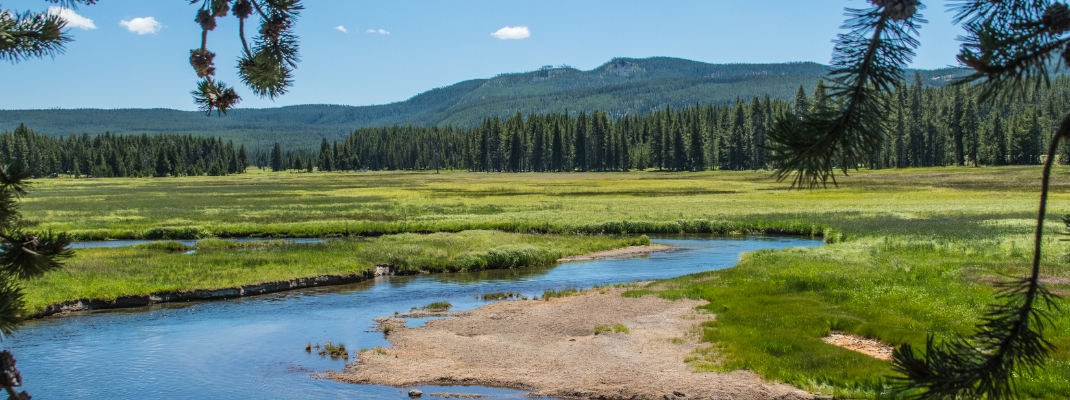
Located near the western entrance to Yellowstone National Park, Madison Campground has 278 campsites, many of which can accommodate RVs, though there are no hookups. The campground does have flush toilets, potable water, and a dump station, though, and as it is open from April to mid-October, it is one of few campgrounds in the park that offers a longer season.
This makes it ideal for visitors who prefer the quieter, cooler months of spring and fall. It can, however, get pretty busy in the summer, so reservations are highly recommended.
The Madison River runs close to the campground, as does the Firehole River, making it a favorite for campers who want to enjoy a spot of fishing. It’s also a great campsite for wildlife enthusiasts, as the meadows surrounding the campground are regularly visited by bison and elk, especially in the early morning and evening hours.
Another great thing about Madison Campground is its close proximity to Yellowstone’s geothermal areas, with Old Faithful and the Upper Geyser Basin less than an hour’s hike away. It also makes a convenient base for campers who want to explore areas like Norris Geyser Basin and the Gibbon River.
Norris Campground
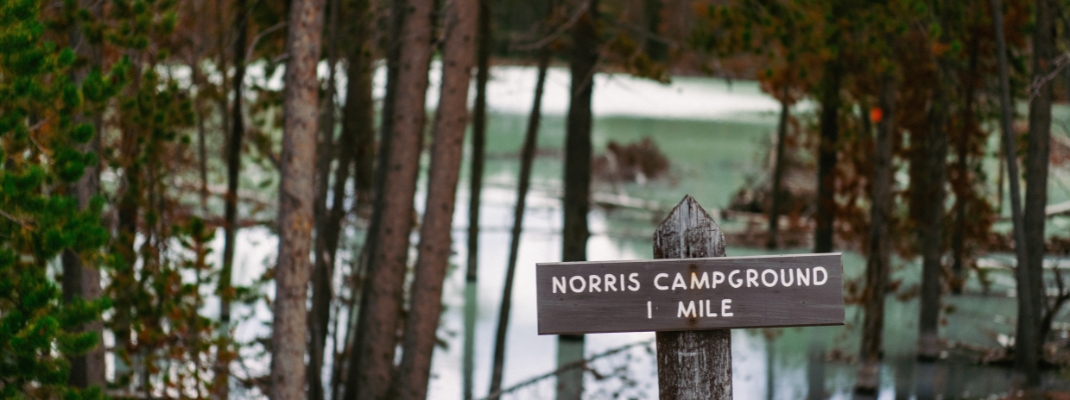
Norris Campground sits just a short distance from the Norris Geyser Basin, one of Yellowstone National Park’s most geologically active areas, making it a prime spot for anyone intrigued by the park’s geothermal activity, while also offering a more serene camping experience than some of the busier campgrounds.
There are over 100 sites here that can accommodate both RV and tent campers, although larger RVs may find some of the spaces a bit tight. There are also no hookups, but you will have access to flush toilets and potable water. Also, unlike many of Yellowstone’s campgrounds, Norris Campground operates on a first-come-first-served basis, which means reservations cannot be made ahead of time. As such, it’s best to arrive early, especially in the peak months of May to September.
In terms of nearby attractions, Steamboat Geyser (the world’s tallest active geyser) is a short walk away, as well as several hot springs and fumaroles. Also, if you’re in the mood for a bit of exploration, the Norris Geyser Basin Museum offers you a fascinating insight into the area’s volcanic activity.
For hikers, the area around Norris Campground provides several excellent hiking trails, from short strolls around the geyser basin to more challenging treks like the 6-mile loop around Solfatara Creek, which offers you the opportunity to enjoy a mix of forested landscapes and geothermal activity.
Mammoth Hot Springs Campground
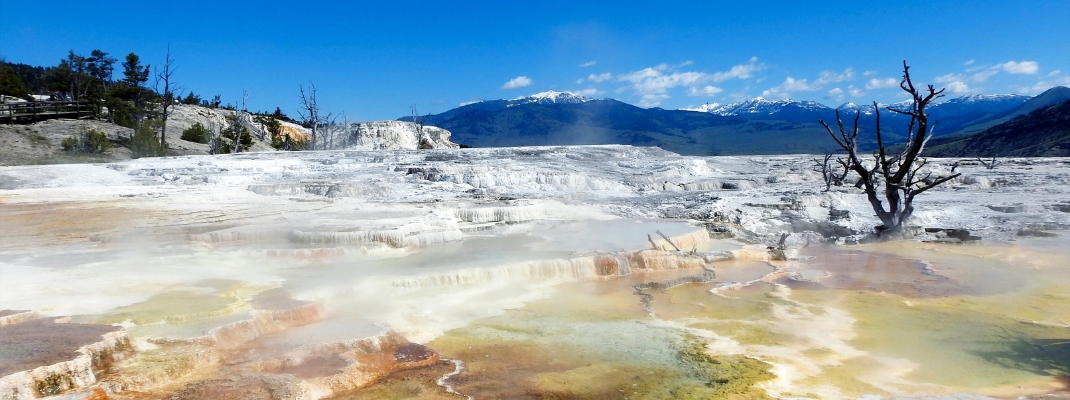
As the only campground in Yellowstone National Park that remains open year-round, Mammoth Hot Springs Campground is an ideal choice for anyone looking to enjoy a camping trip in the quieter, off-season months.
As its name suggests, this campground is located near the historic Mammoth Hot Springs Terraces, and with 85 sites, it’s relatively small compared to some of the other campgrounds in the park. However, it can still accommodate RVs up to 40 feet, while there are no hookups, you will find flish toilets and potable water.
Because this campground stays open throughout the winter, it’s a popular spot for snowshoeing and cross-country skiing, or simply for those looking to explore the natural beauty of Yellowstone National Park in the colder months. It’s also in an area rich in history, as the nearby town of Mammoth was once a military outpost, and today, you can explore historic buildings, a visitor center, and the famous Mammoth Terraces – beautiful, otherworldly formations created by geothermal activity.
Wildlife is another major draw here, as the northern part of Yellowstone National Park is home to herds of elk, which can frequently be seen grazing around the Mammoth area in the winter. Bison, wolves, and bears are also commonly spotted in the nearby Lamar Valley, so if you’re an animal lover, this is the campground to visit! Hiking is also on offer here, with trails around Mammoth Hot Springs, such as the Beaver Ponds Loop Trail taking you through forests, meadows, and ponds, all with the possibility of spotting wildlife along the way.
Slough Creek Campground
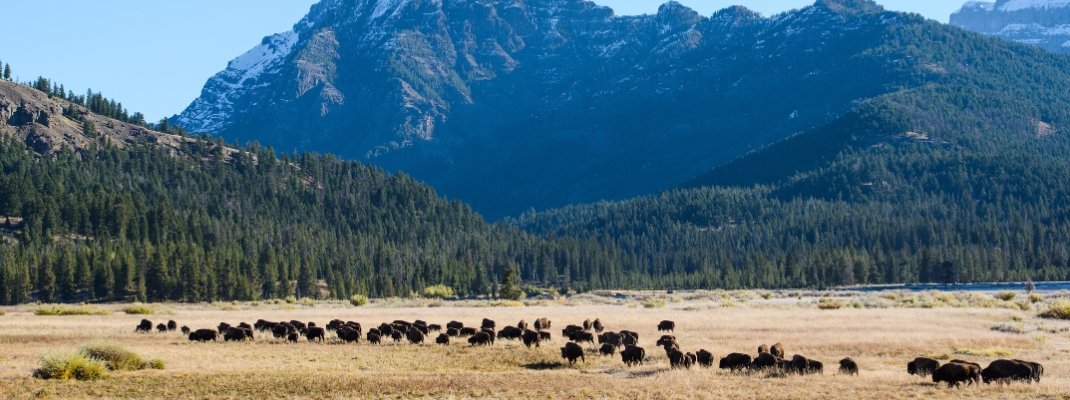
If you’re seeking solitude and a more rugged camping experience, Slough Creek Campground is an excellent choice. With just 16 sites, it is one of the most intimate camping spots in Yellowstone National Park, and while there are no hookups and the amenities are limited to vault toilets and potable water, the campground’s seclusion and scenic beauty more than make up for the lack of modern conveniences.
Slough Creek Campground is located near the wildlife-rich Lamar Valley, and spots here are offered on a first-come-first-served basis. This means you’ll need to arrive early to claim a site, especially during the summer months when the campground is most popular.
One of the things that draws campers to Slough Creek is the excellent trout fishing opportunities, and anglers from all over the world come here to cast their lines into the pristine waters in hopes of catching a cutthroat trout.
It’s also a prime location for wildlife watching, and the nearby Lamar Valley is often refered to as “America’s Serengeti”, with elk, bison, and bears to be spotted throughout the day. It’s also home to the Slough Creek Trail, which offers a scenic trek along the creek, passing through meadows and forests, and it can be customized in length, making it a great option for both casual walkers and more experienced hikers.
Lewis Lake Campground
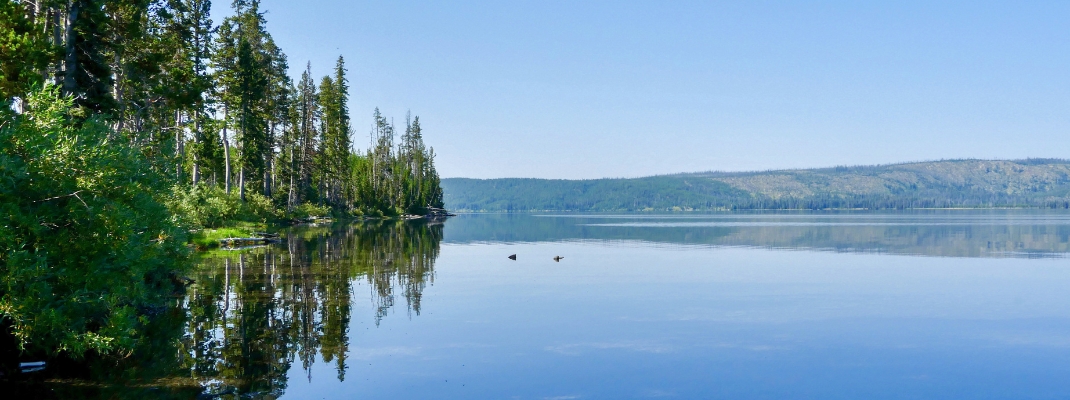
Situated in the southernmost part of Yellowstone National Park, Lewis Lake Campground is the ideal site for campers who want to explore both Yellowstone and the nearby Grand Teton National Park. There are 85 campsites here that can accommodate tent camping and small RVs, and while there are no hookups for electricity or water, there is potable water and vault toilets. It also has a longer season than some other campgrounds, and is open from mid-June to early November, making it a great choice if you’re hoping to explore Yellowstone during the late summer and fall.
One thing to be aware of is that, because of Lewis Lake Campground’s remote location, strict food storage regulations are in place to prevent bear encounters. This includes storing all food and scented items in a bear-proof container and ensuring this is always kept inside your vehicle.
The campground’s location by the lake makes it a great spot for canoeing, kayaking, and fishing. Or, if these activities aren’t particularly appealing to you, you can simply paddle in the calm waters or relax on the shores with birdsong and rustling leaves providing you with a natural soundtrack.
For hikers, the Lewis Channel Trail is a great option and offers a scenic route along the lake, leading to the Shoshone Lake backcountry area. This trail also provides you with the opportunity to explore Yellowstone’s wilderness, with fewer crowds than many of the park’s more popular hiking routes.
Indian Creek Campground
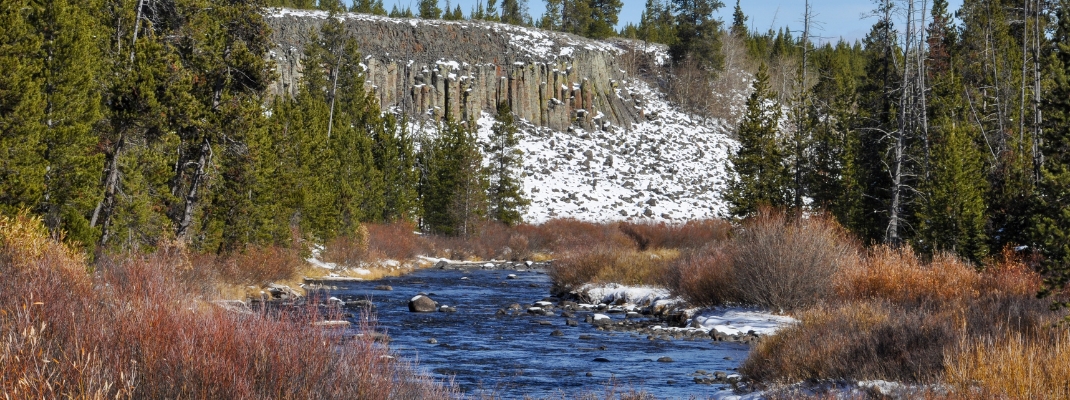
Indian Creek Campground is another excellent option for campers seeking solitude, and with just 70 sites, it is perfect for parking a smaller RV and enjoying a quiet, forested setting that feels far removed from the park’s busier areas. As with the vast majority of campgrounds in Yellowstone National Park, there are no RV hookups, but the campground provies vault toilets and potable water.
Spaces at Indian Creek Campground are offered on a first-come-first-served basis and are open from mid-June to mid-September. While this means it doesn’t have the longest season, its small size and secluded location make it a peaceful retreat for anyone who wants to experience Yellowstone’s wilderness without the crowds.
That being said, while Indian Creek is somewhat remote, it’s still close to major attractions like Mammoth Hot Springs and the Lamar Valley, making it a great base for exploring the northern regions of the park while offering a quiet space to call home for a few nights. There’s plenty of wildlife to explore in this area, too, and it’s not uncommon to see bison, elk, and even bears in the surrounding meadows.
When it comes to hiking, the nearby Bunsen Peak Trail offers you a challenging 4.6-mile round trip to the summit of Bunsen Peak, where you’ll be rewarded with stunning views of the valleys and meadows below.
Check out our guides on other RV parks & campgrounds we’d recommend in the USA
- Check Out RV Parks Near Bryce Canyon National Park
- Check Out RV Parks Near Arches National Park
- Check Out Top 9 Camping Locations in Moab
- Check Out Top 6 Zion National Park Campgrounds
- Check Out 11 Olympic National Park Campgrounds & RV Parks
- Check out Best US National Park RV Camping & Campgrounds
Looking for more inspiration? Check out our full list of recommended campgrounds across the US & national park road trips with campgrounds.
Find popular road trips across the USA
- Check Out Los Angeles Road Trips
- Check Out Las Vegas Road Trips
- Check Out San Francisco Road Trips
- Check Out Miami Road Trips
- Check Out Denver Road Trips
- Check Out Seattle Road Trips
- Check Out New York Road Trips
Get the best rates on campervan rental in the USA
Affordable and flexible travel is easier than ever with the right campervan rental. A budget campervan rental in the USA makes it simple to experience incredible destinations without spending a fortune. Lock in the best rates now and get ready for an unforgettable trip.
About the Author
Bastian Graf
Bastian is the Sales & Marketing Manager here at Travellers Autobarn. He holds a Master of Commerce in Marketing and International Business Management, and 20+ years experience in campervan hire, road trips and travel.

